These incredibly fudgy chocolate brownies are studded with mini caramel eggs and swirled with salted caramel sauce, making this the perfect Easter brownie recipe.
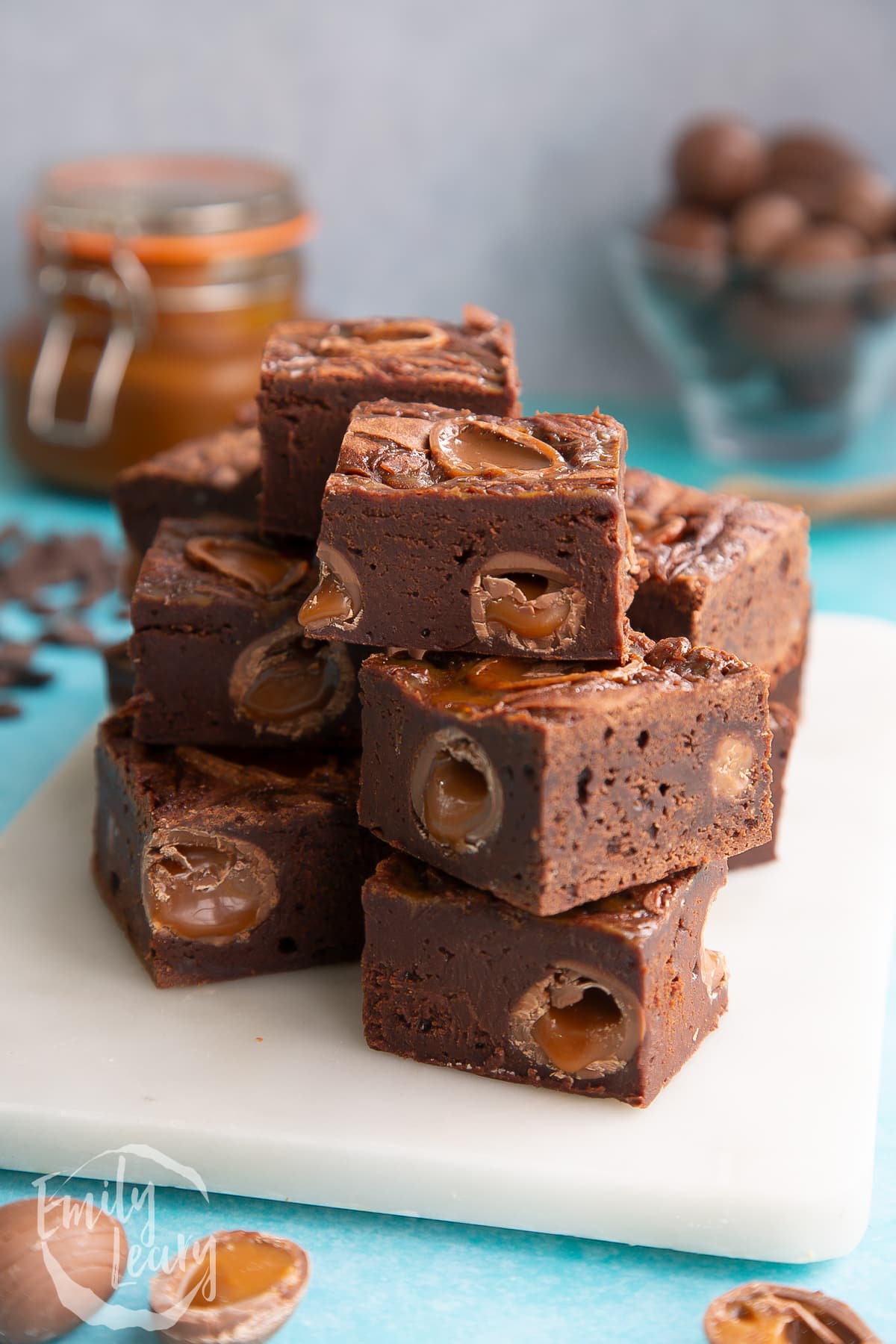
To make these beautiful Easter brownies, you'll start by melting butter and dark chocolate together. You'll then stir in sugar, eggs and vanilla before folding flour into a the mix. And that's your chocolate brownie batter made.
To get the amazing studded effect from the caramel eggs, you'll spoon half the batter into the lined tin, add the caramel eggs on top, then spoon on the rest of the brownie batter.
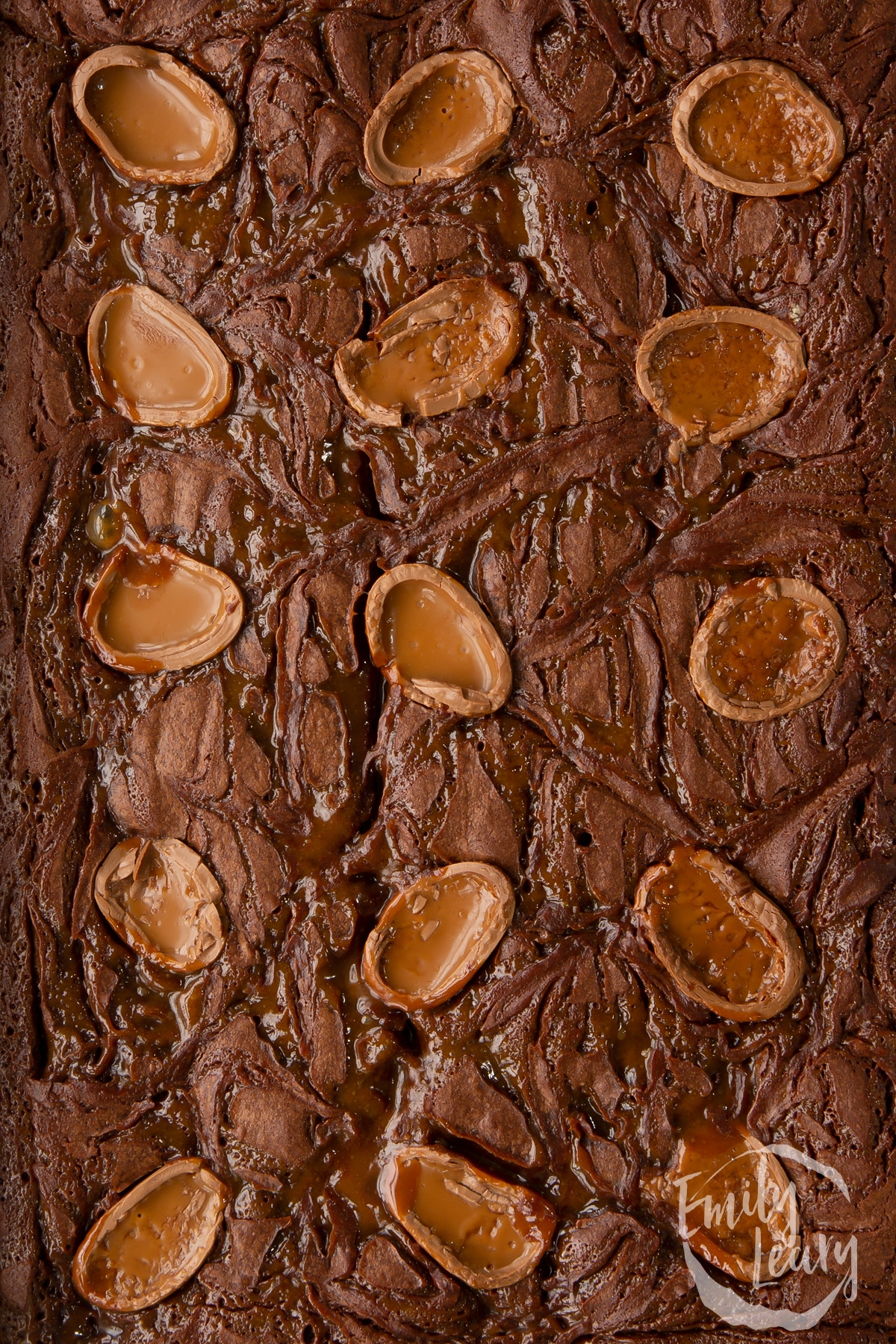
To finish, you'll swirl salted caramel sauce onto the surface and top with more caramel eggs. Then all that's left to do is bake!
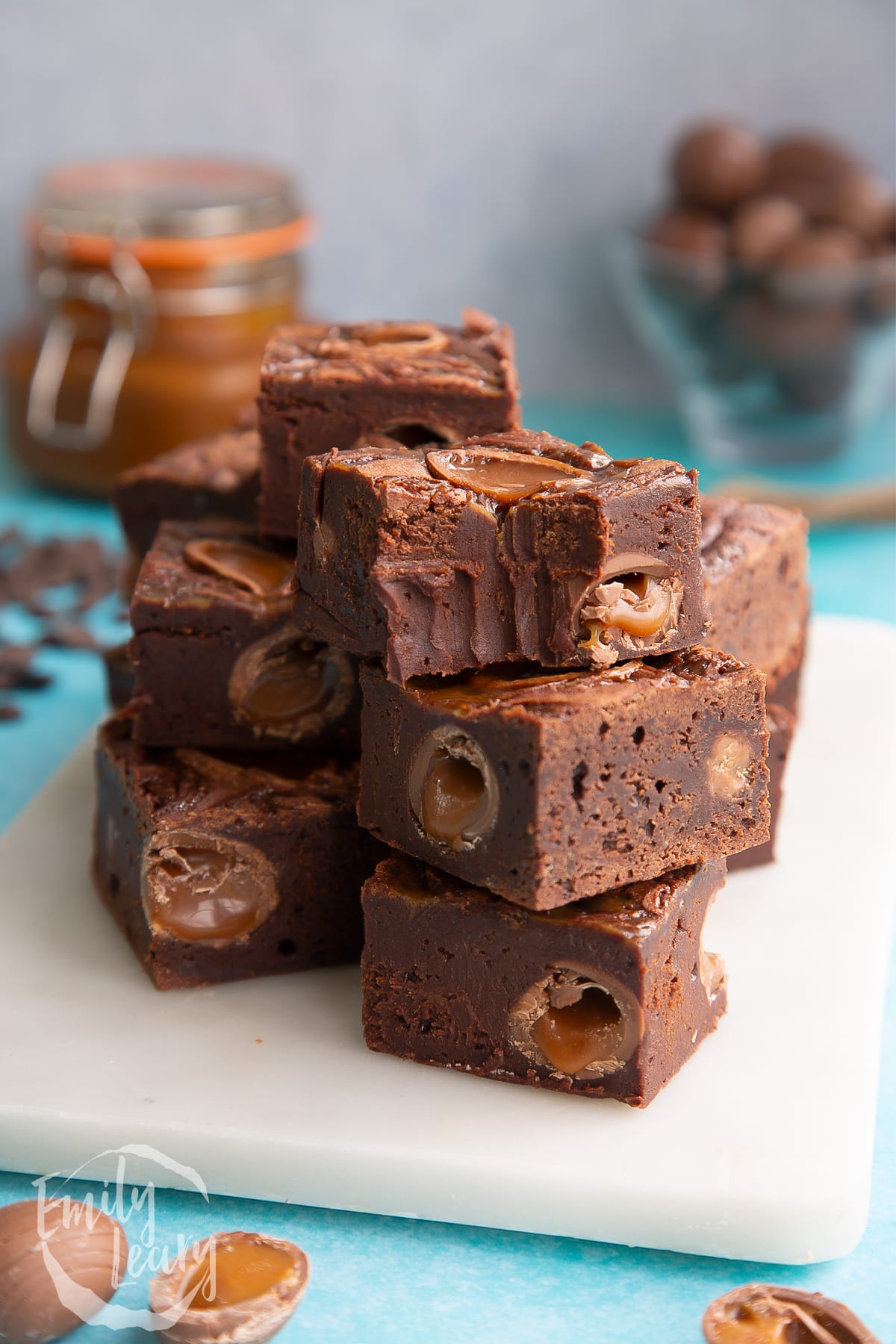
This is such a decadent, rich Easter bake, I just know you're going to love it. Here's my full Easter brownie recipe, complete with lots of step-by-step photos to help you along the way.
Ingredients
For the batter
- 400 g (14 oz) dark chocolate (bittersweet) roughly chopped
- 280 g (2 sticks + 1 tbsp) slightly salted butter cubed
- 450 g (2½ cups) white caster sugar (superfine sugar) superfine
- 6 medium free range eggs room temp, beaten
- 1 tbsp vanilla extract
- 170 g (1 cup + 3 tbsp) plain white flour (all purpose flour)
- 240 g (8.5 oz) mini caramel eggs
To top
- 50 g (2½ tbsp) salted caramel sauce
- 80 g (3 oz) mini caramel eggs halved
Equipment
- Rectangle 32x23cm (12"x9") nonstick cake tin
Instructions
Preheat the oven to 180C (160C fan).
Put the butter and chopped dark chocolate in a large, heatproof bowl.
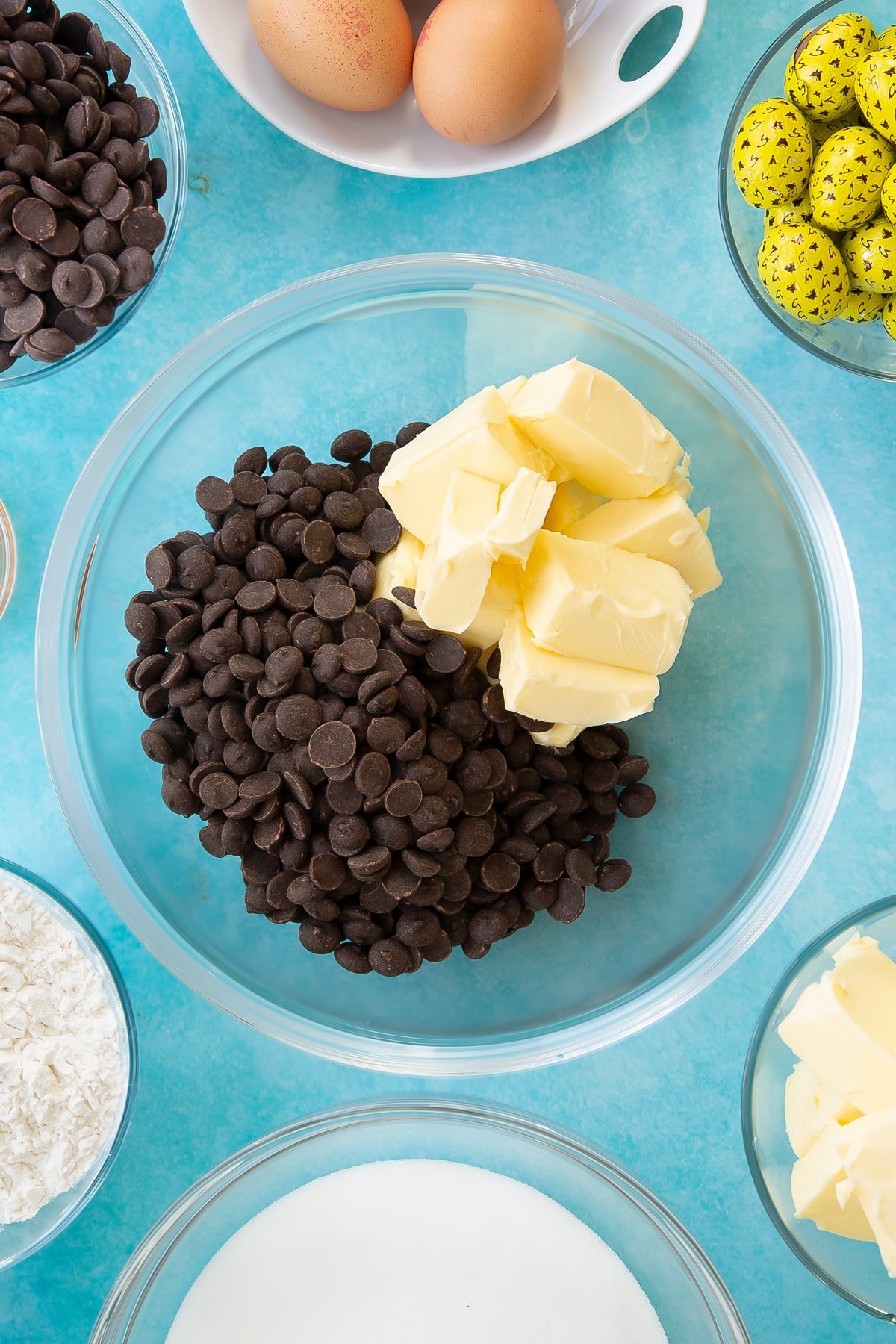
Use 30 second bursts in the microwave to melt the chocolate and butter together. Alternatively, you use a bain marie method, placing the bowl over a pan with a little boiling water and allowing the steam to heat the bowl and you stir gently.
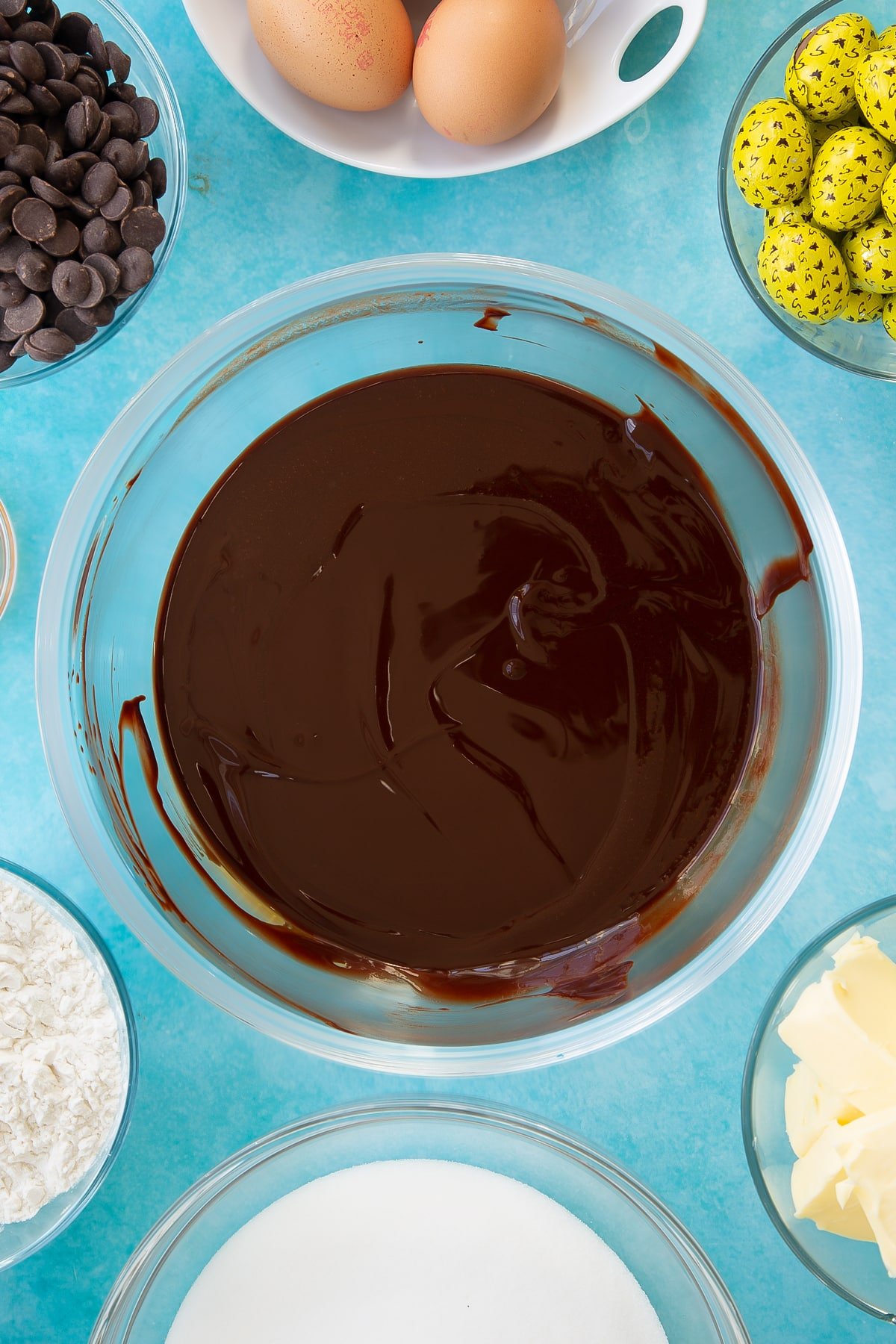
Add the sugar into the chocolate.
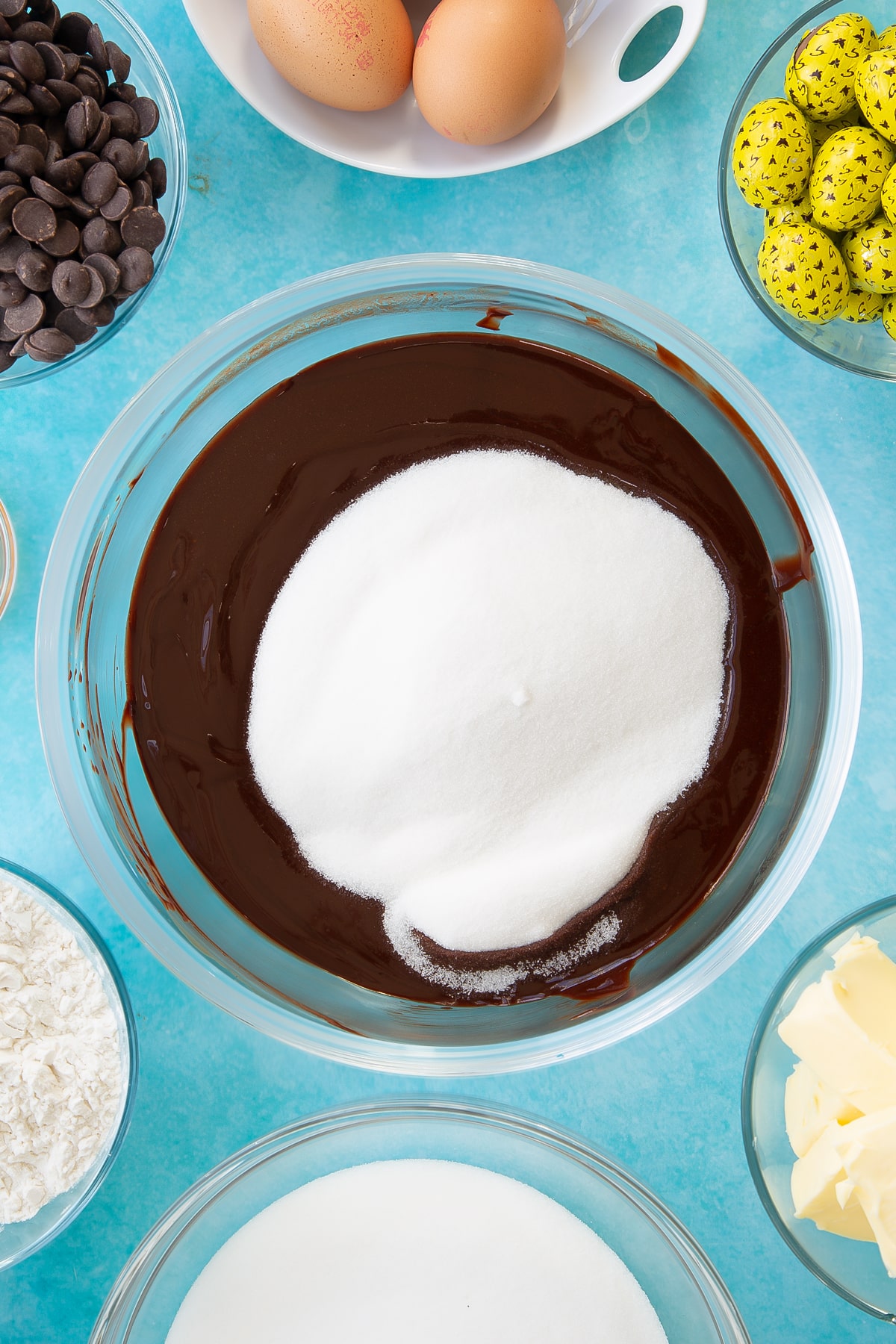
Whisk lightly together It's ok if it's grainy at this stage.
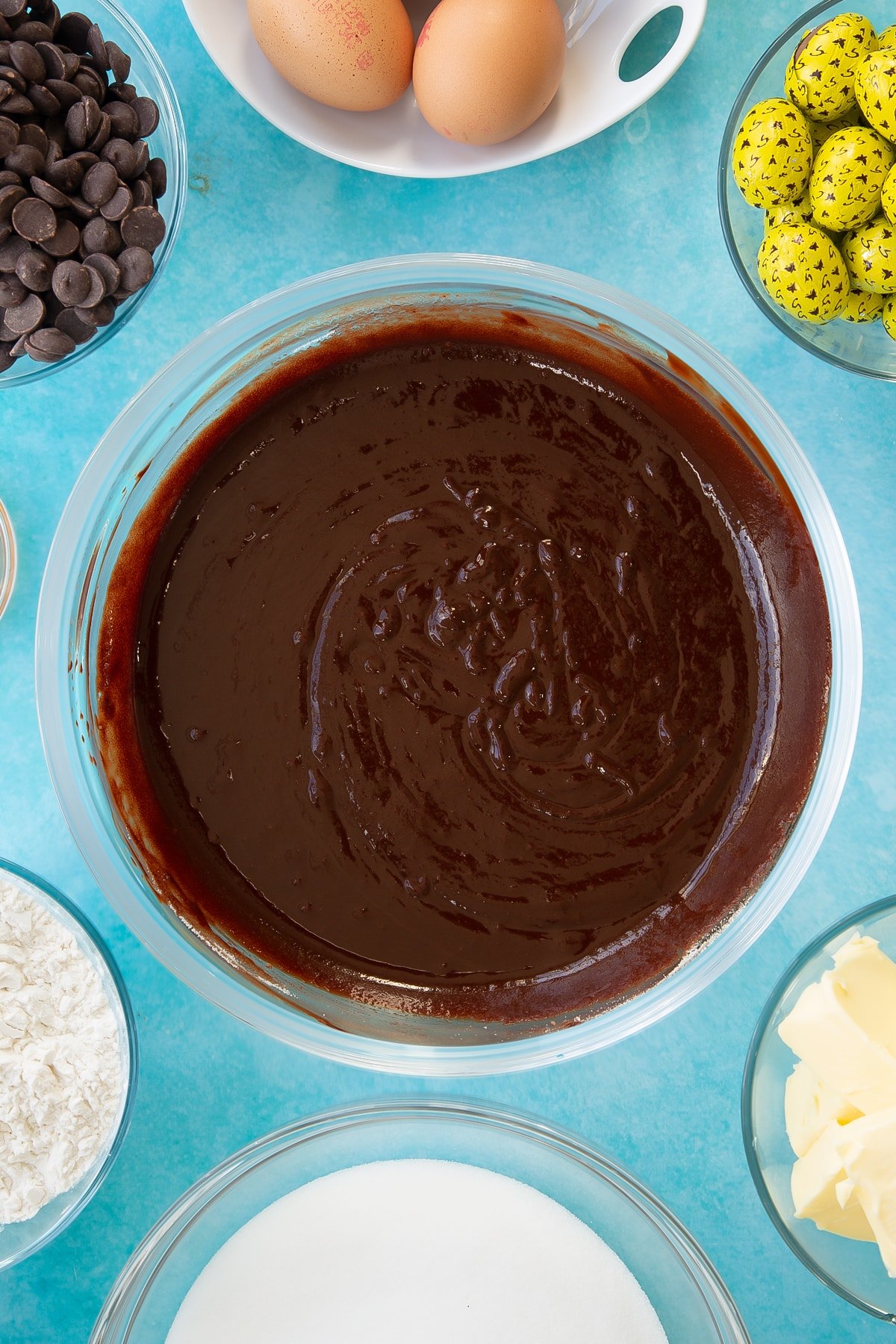
Add the beaten eggs and vanilla.
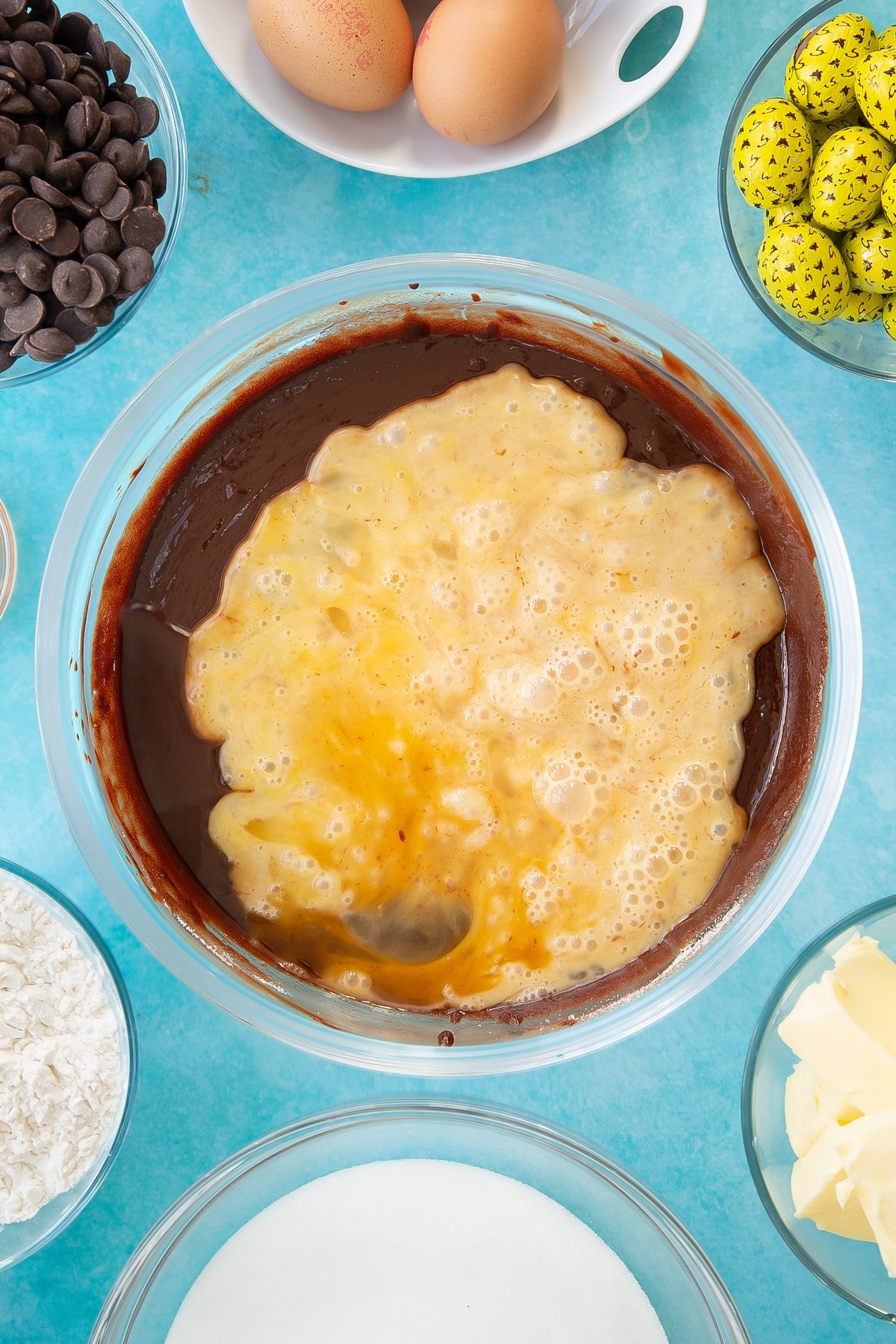
Whisk through.
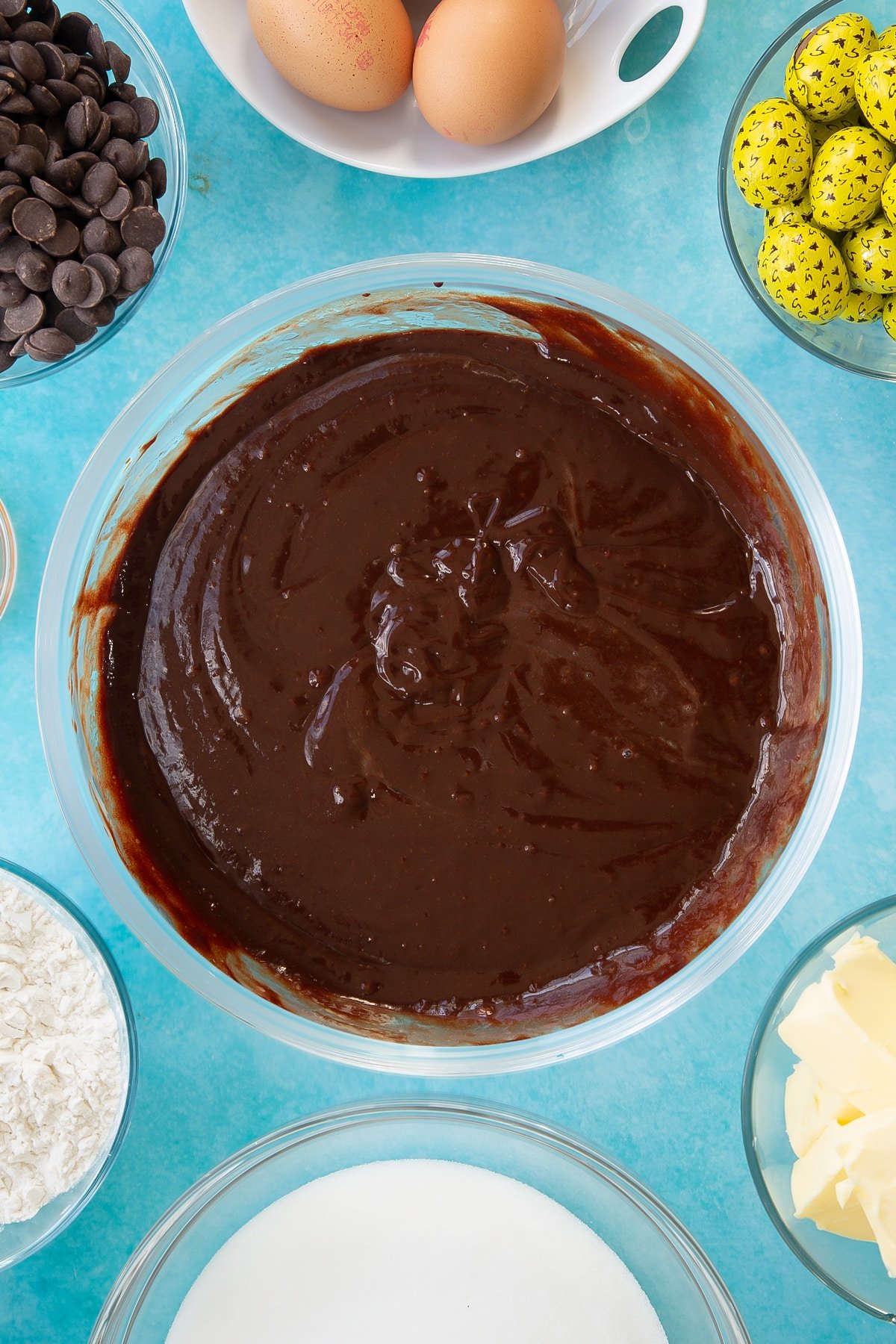
Sieve the flour into the bowl.
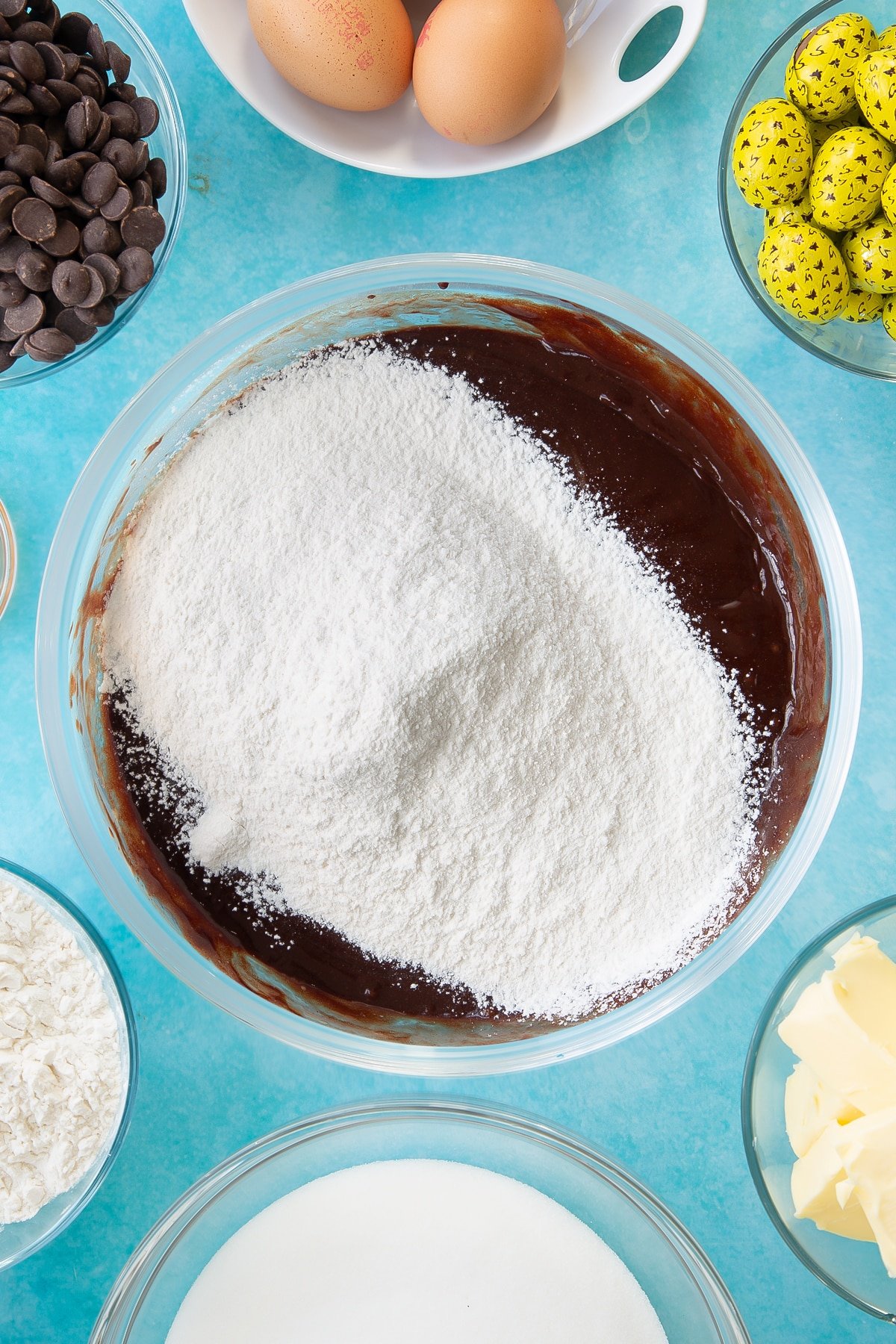
Fold through with a silicone spatula or metal spoon.
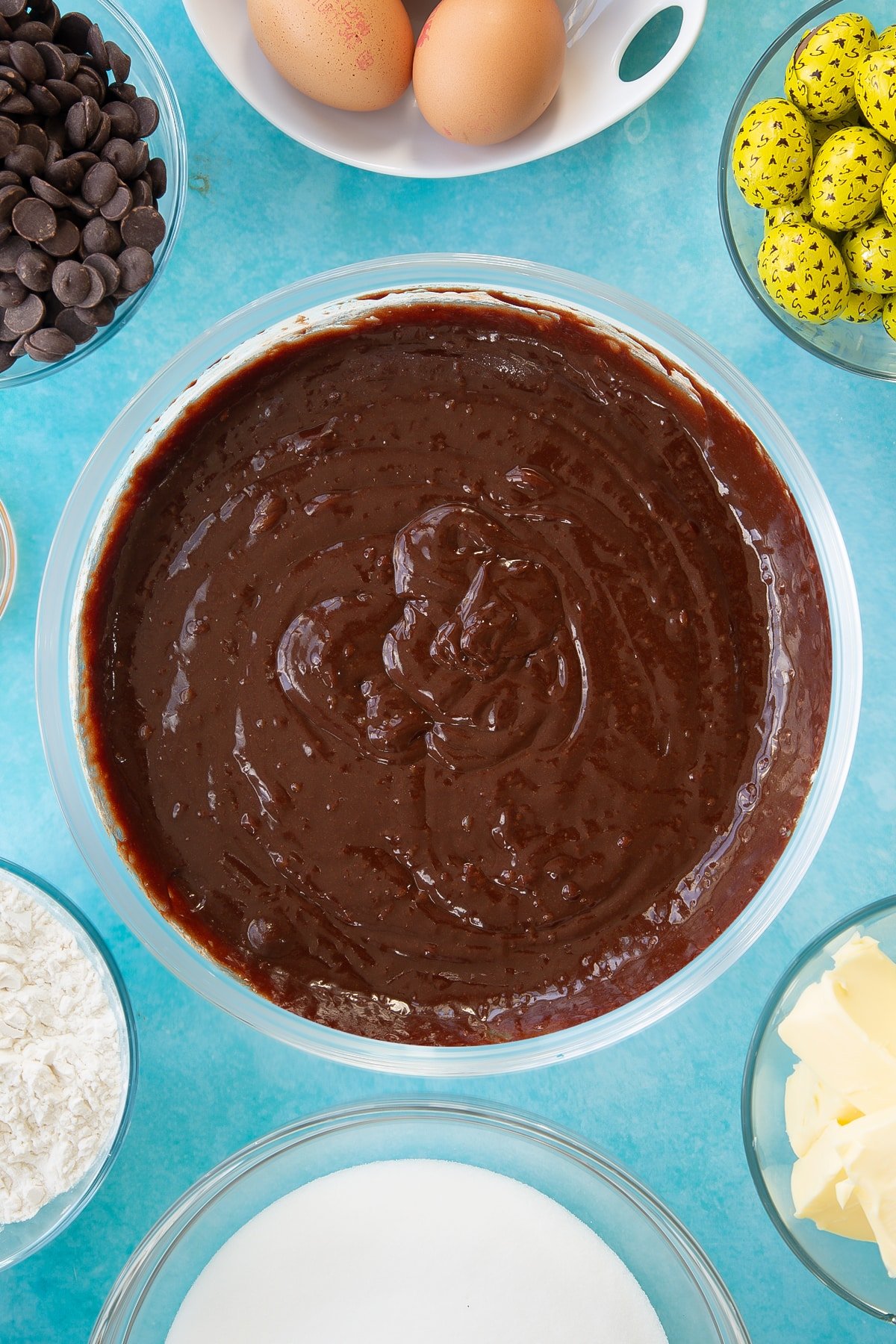
Grease and line a 20cm x 28cm (8 inch x 11 inch) non-stick shallow rectangular cake tin. Fill with half the brownie batter and level off.
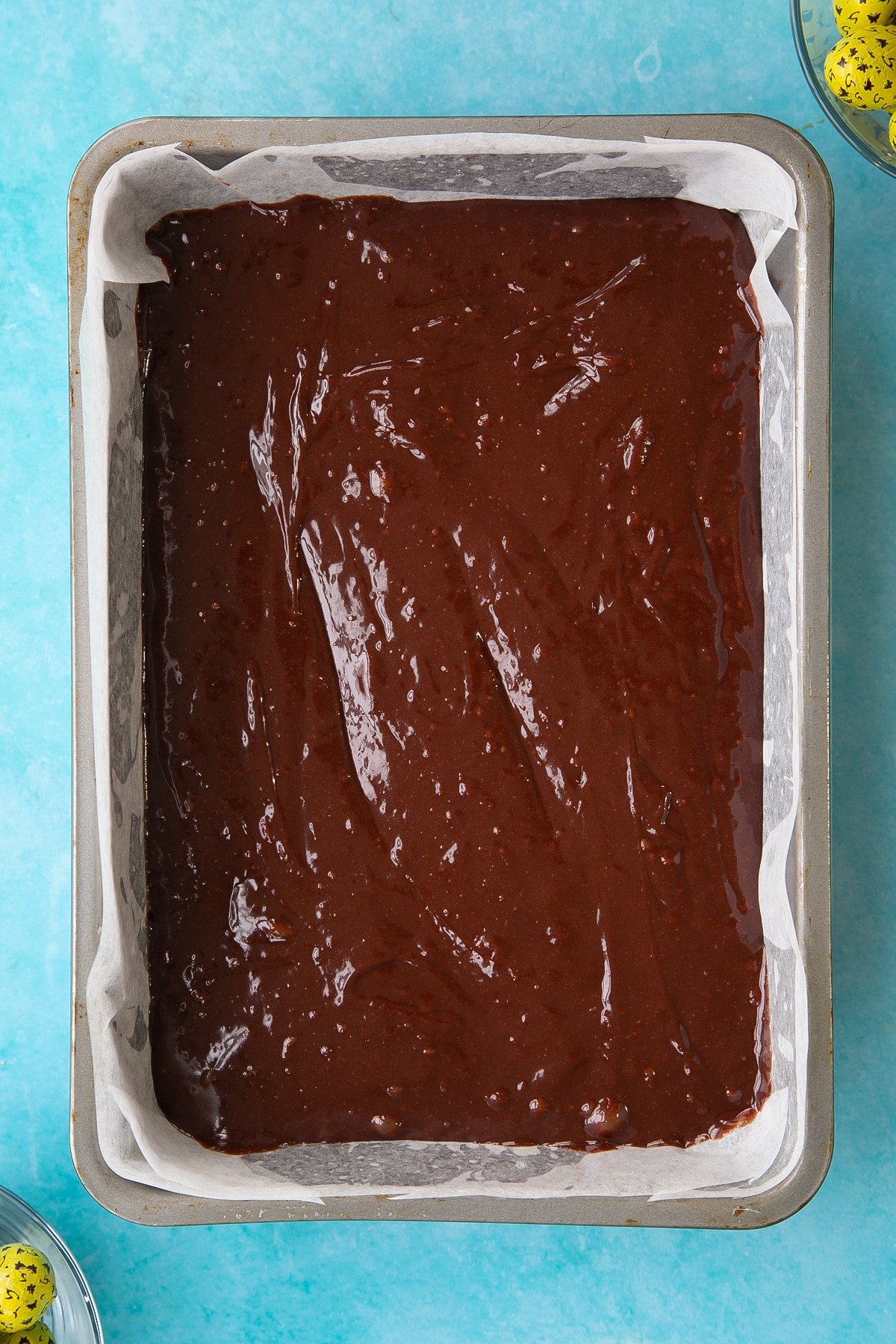
Put the 24 whole mini caramel eggs on top of the batter, spacing evenly all over.
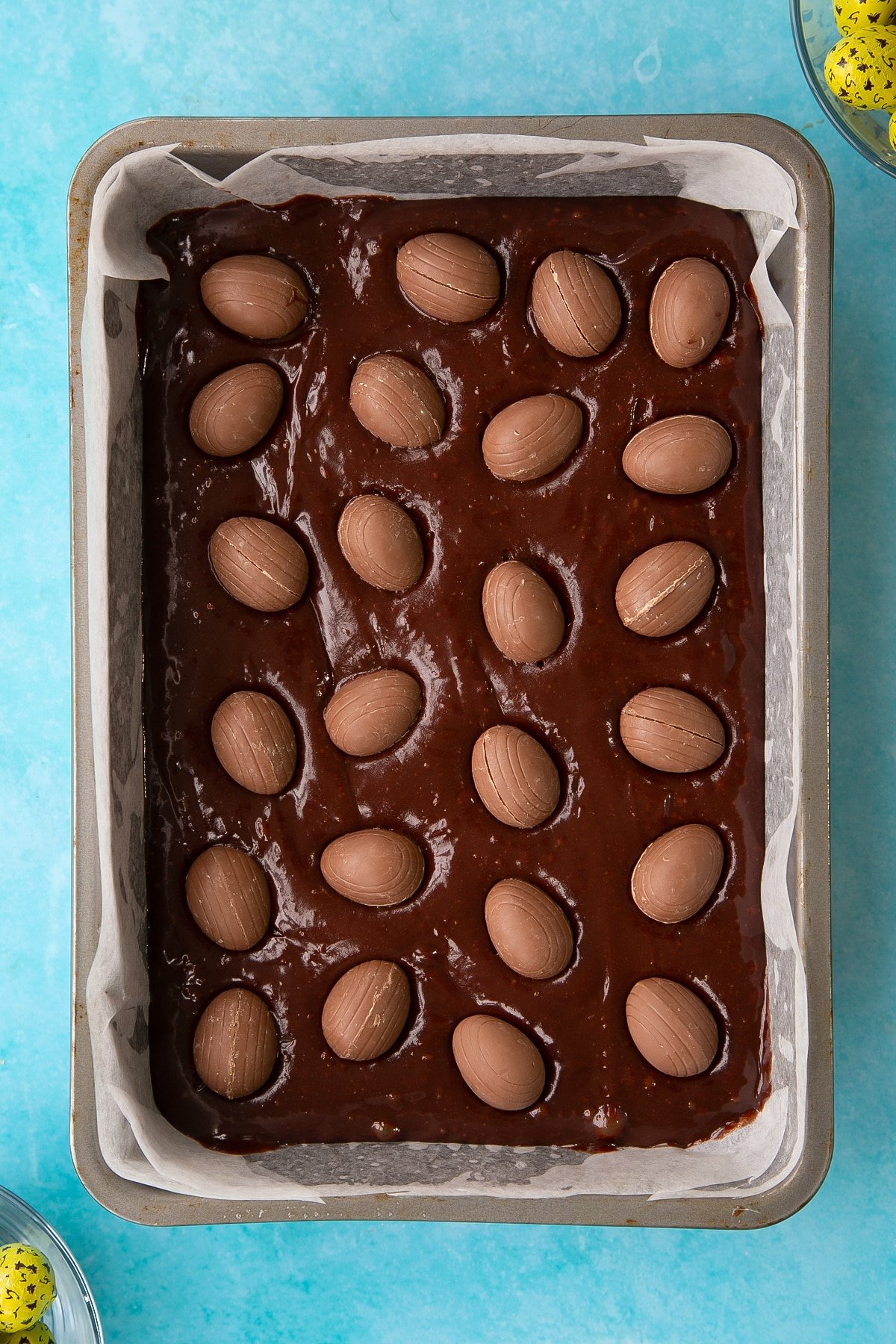
Spoon the remaining batter on top and gently level off, ensuring all the eggs are covered.
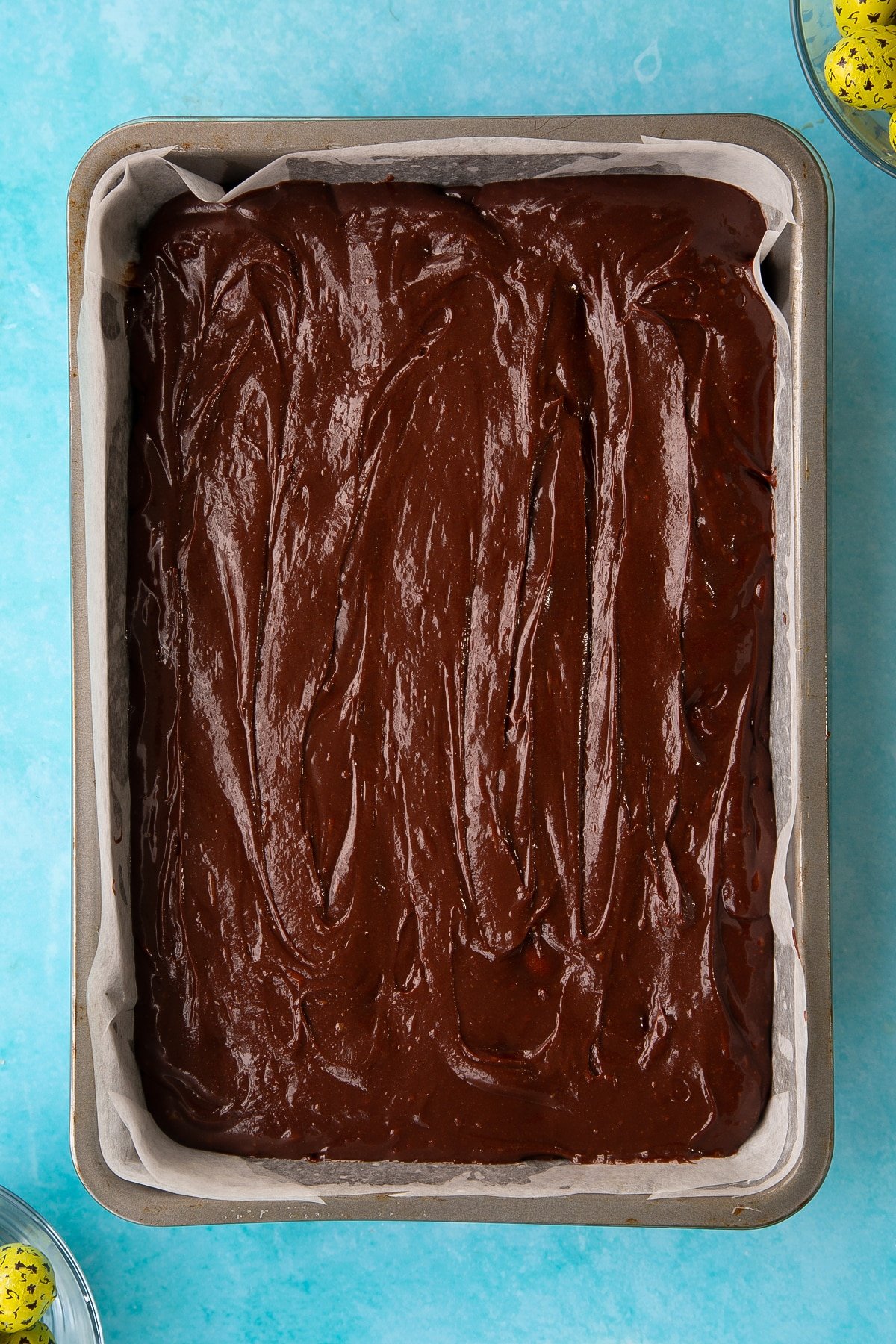
Drizzle the caramel all over the top of the brownie batter.
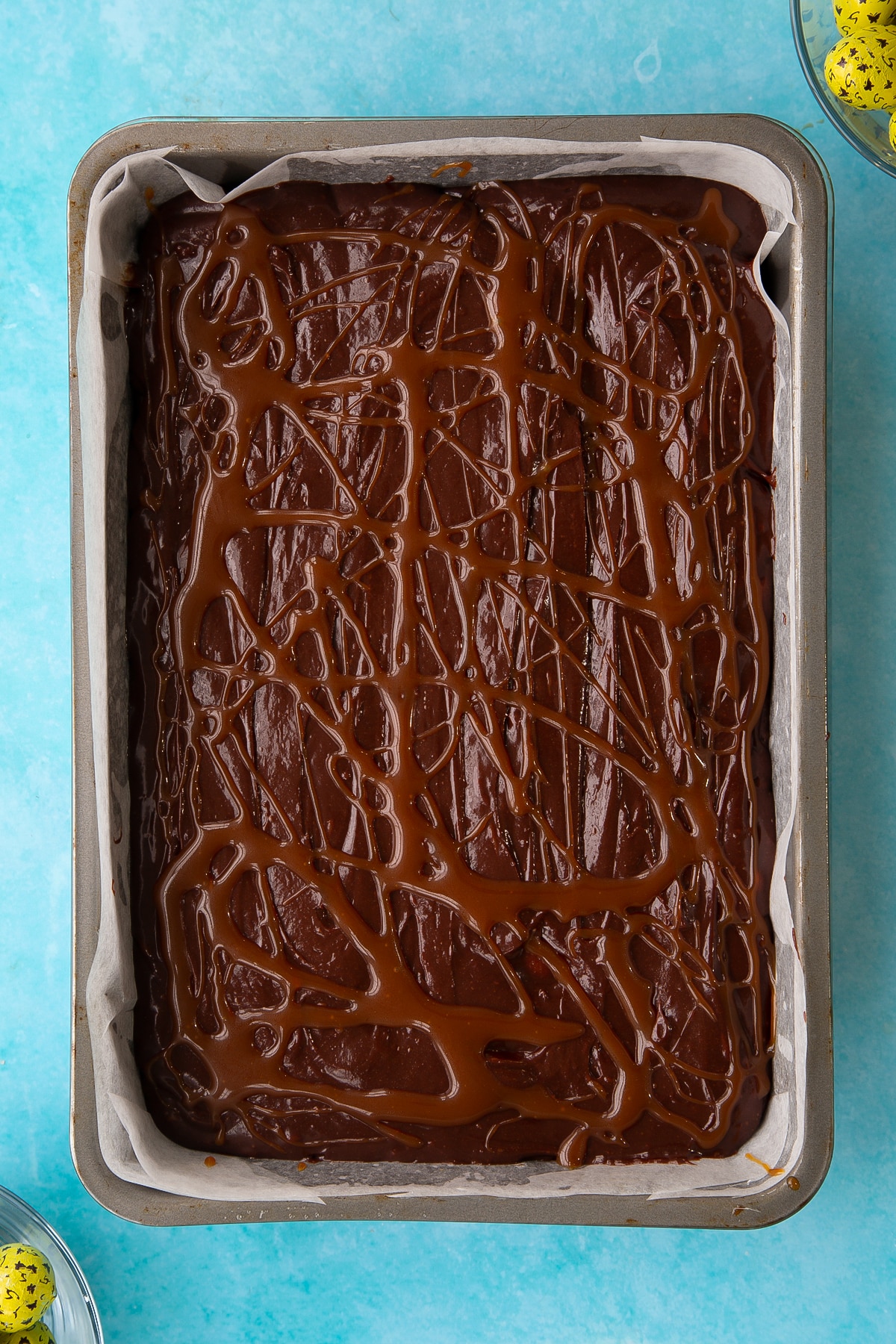
Swirl gently with the handle end of a spoon.
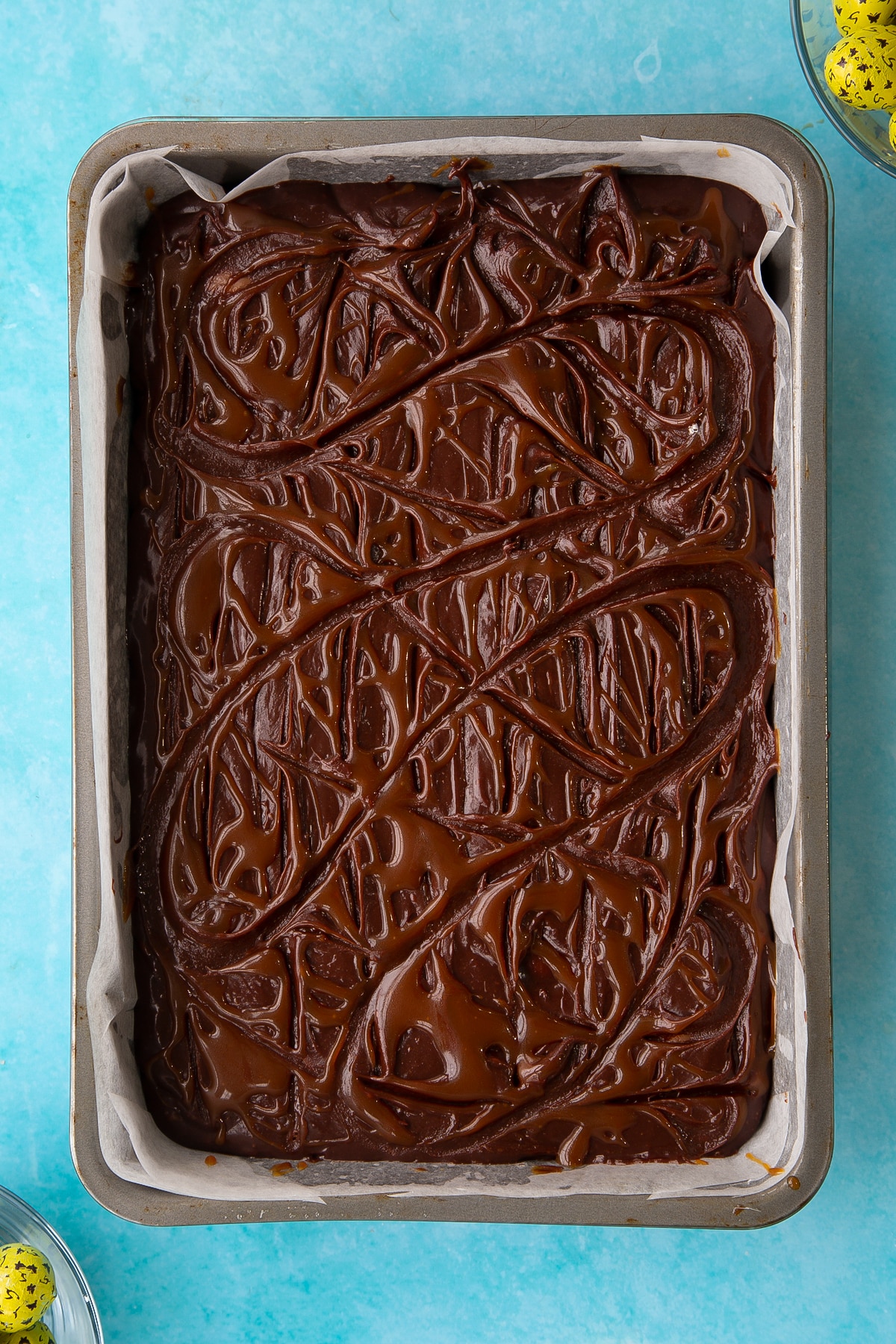
Top with the halved mini caramel eggs in a 3 x 5 pattern so that one half will top each piece when sliced.
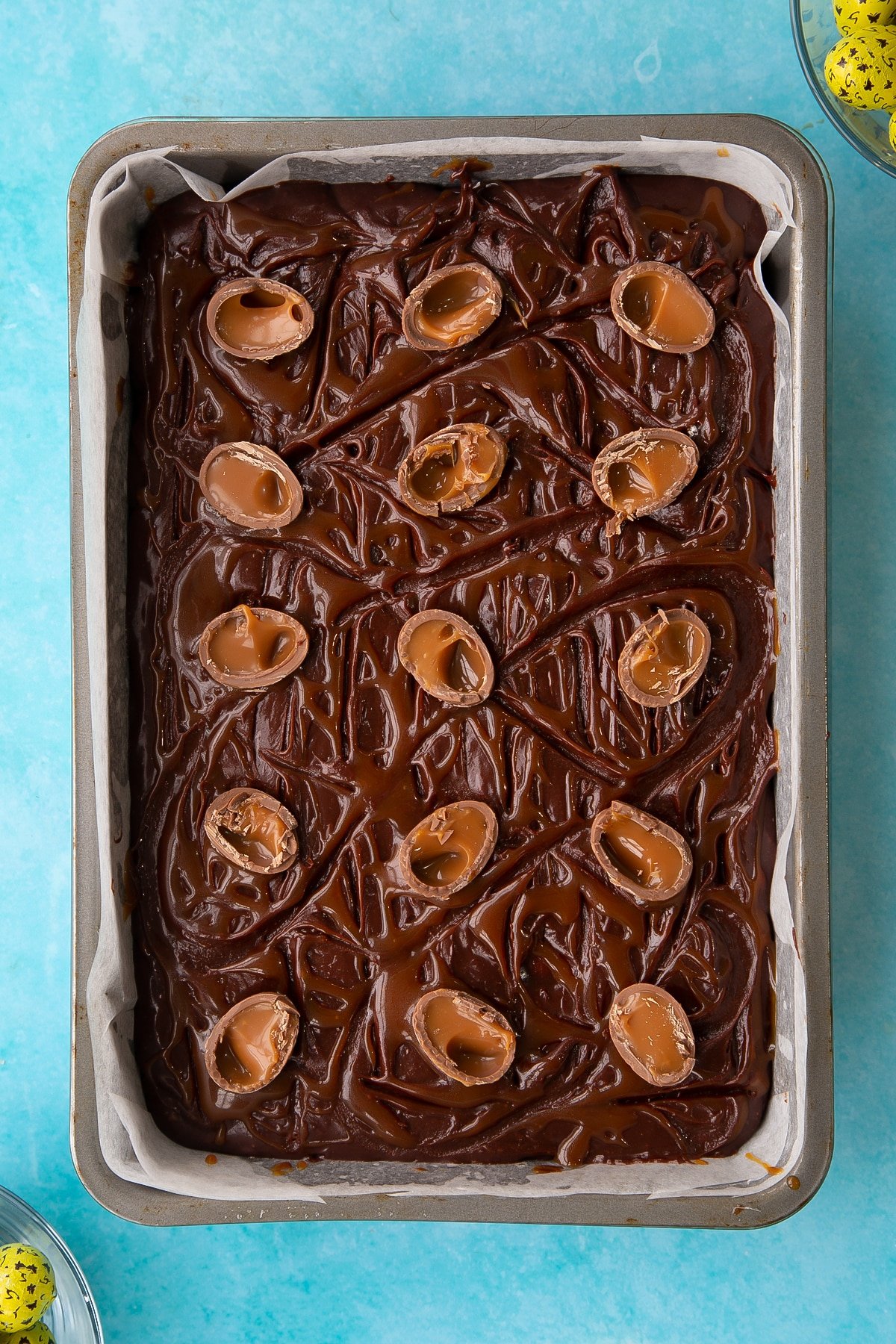
Bake for 30-35 minutes. You can test if it's baked by pushing a skewer into the centre. If under-baked, you'll see totally wet batter on the skewer. If just right, you'll see sticky crumbs. If over-baked, the skewer may come out completely clean.
You might need to do a few checks to make sure you're not prodding a melted egg. Be careful not to over-bake as this can also cause the caramel to overcook and harden.
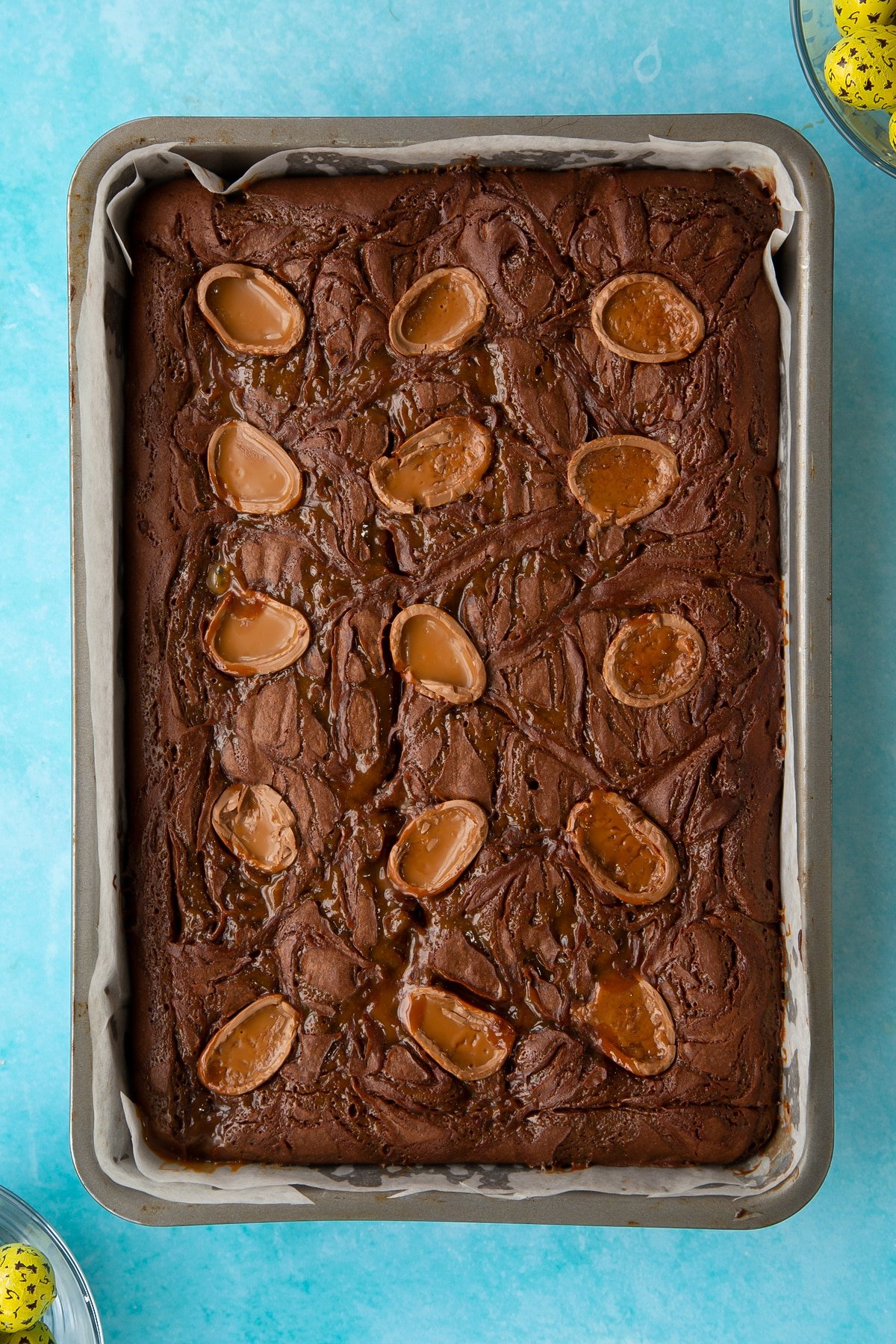
Leave the brownie in the tin to cool. If you've elected to keep them quite softly baked and fudgy, placing the cold brownies in the fridge over night will really help them firm up.
Once the brownie is chilled, transfer to a board and cut into 15 equally sized squares in a 3x5 pattern.
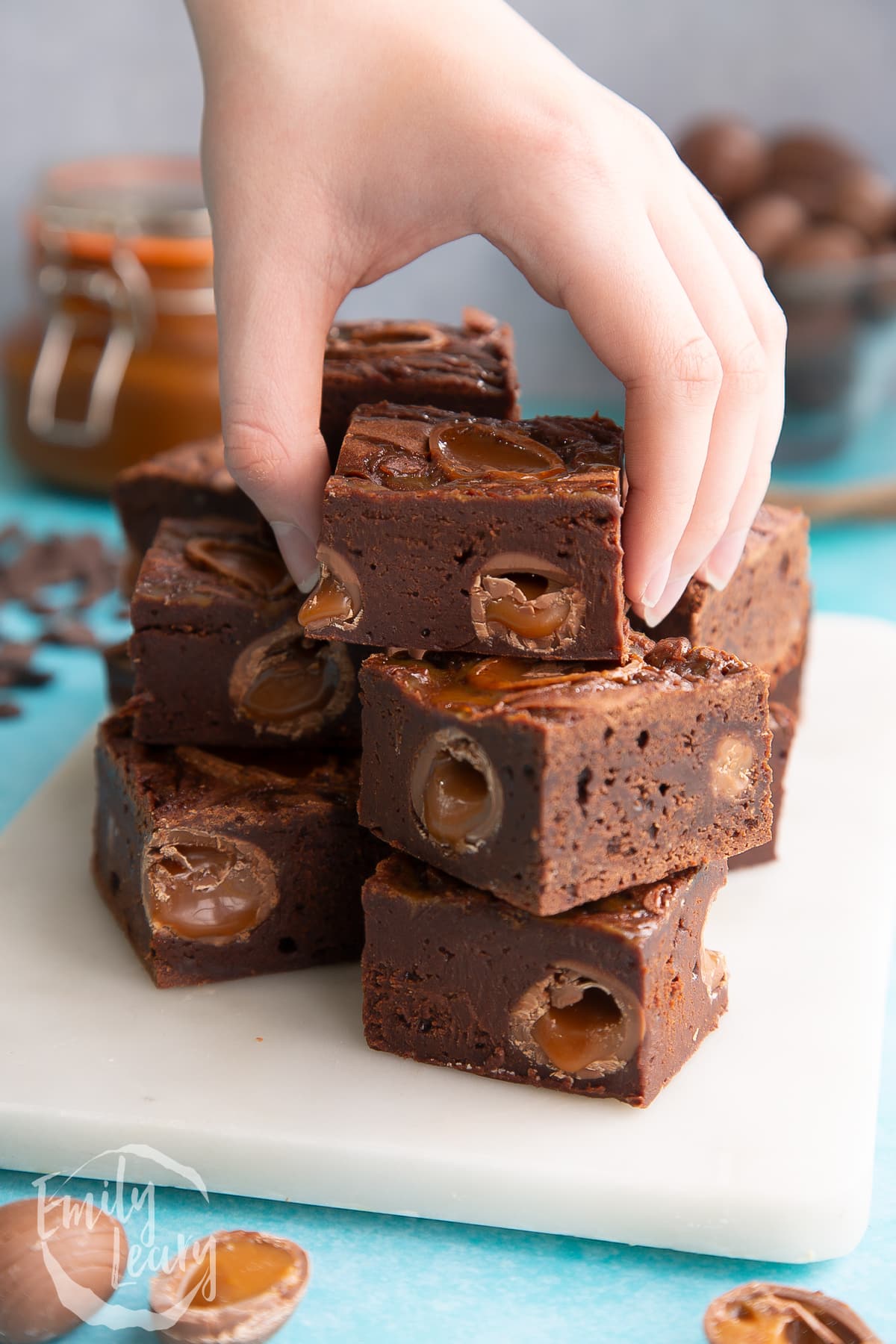
Pointers, tricks and troubleshooting tips for the perfect Easter brownie recipe
Is this Easter brownie recipe easy to make?
This Easter brownie is a really easy recipe perfect for whipping up on Easter Sunday or for using up any leftover mini caramel eggs leftover from your egg hunt!
The brownie batter ingredients are whisked together in a single bowl (saves on washing up too!). Then it just takes just 30 minutes to cook brownies in a preheated oven!
I always include pictures for every step of the recipe, so you know precisely how your brownies should look as you make them. So if you're ever in doubt, you can check the pictures for help.
Will I need any special equipment to make this Easter brownie recipe?
If you're a regular baker, you probably have all that you need to make this recipe. You'll need a heat proof mixing bowl, a suitable tin for baking the brownies, baking paper and a wire cooling rack. You can use an electric whisk to mix the ingredients, but mixing by hand is fine too.
As ever, there's a complete list of equipment on the recipe card below. I always include links to example products to show exactly what I used to make each recipe.
How can I tell if eggs have gone off?
Eggs are tough to gauge from the outside, so it's always best to use eggs which are as fresh as possible.
You should never eat an egg that looks, smells, feels or tastes odd. So if your egg has any discolouration, odd appearance, or a strange or foul odour, it's probably rotten.
If your egg has spoiled, you should immediately throw it away and thoroughly wash anything it came into contact with it.
Before cracking open an egg, you can do ‘a float test’ to check it isn’t rotten. You can do this by placing your egg in a cup or bowl of water to see if it sinks or floats. Old eggs can contain excess gas as liquid evaporates, so they’re more likely to float.
However, a bad egg can still sink.So it's best to crack your egg into a separate bowl or cup before adding it to a recipe. This lets you check the egg for any broken shell fragments and that it’s safe to eat.
To avoid your eggs spoiling, you should always follow the storage instructions on the egg packet. If you stored your eggs at a different temperature or location than the instructions, they may spoil more quickly even if they're in date.
A Mummy Too does not give medical advice. Please consult with your medical professional.
How can I tell if the butter has gone off?
Spoiled butter usually turns dark yellow or even has inconsistent patches. Spoiled butter can also ‘sweat’ from water escaping as bacteria break it down.
Butter spoils when bacteria break the fat, protein and liquid molecules from each other. Lactic acid released during this process can also produce a sour smell and give the butter a fizzy quality.
However, spoiled butter can sometimes look and smell normal. So give it a taste before you add it to your batter mix. If it tastes/feels fizzy, it isn't safe to use.
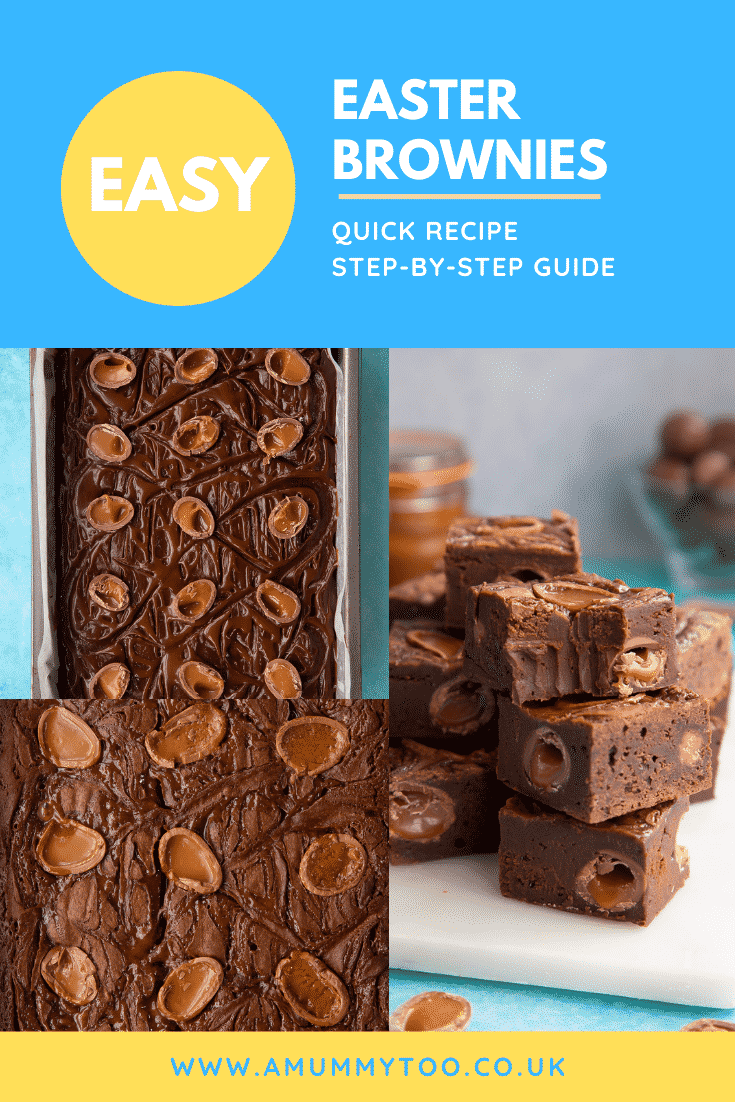
Are Easter brownies suitable for vegetarians?
The recipe for these Easter brownies is only vegetarian if you use the exact ingredients listed and choose vegetarian caramel eggs.
If you make any substitutions or additions make sure to check your labels.
Animal-derived products can be used to colour or flavour sweet and savoury food, so it sneaks into the most surprising ingredients!
Always make sure that you double-check all of your ingredients labels to ensure that they are vegetarian. Also, don't forget to check anything extra that you intend to serve with your recipe.
Are Easter brownies suitable for vegans?
Unfortunately, this recipe contains dairy and egg, so it isn't suitable for vegans. You could try making a vegan version of this recipe, but I haven't tried it so I can’t guarantee it would work.
When you bake vegan versions of a recipe, it's best to use a recipe designed for vegan ingredients. Vegan brownies require different ingredients to replicate the results of dairy so they behave slightly differently than the ingredients this recipe is intended for. The BBC have a vegan brownie recipe could be a good place to start - I'm sure you could add a handful of caramel eggs to it with no trouble.
I've also listed vegan substitutions for this recipe, if you do want to try this recipe. However, I haven't made a vegan version of this recipe yet. So if you try let me know how it goes in the comments!
- Chocolate: Vego makes good quality vegan chocolate melts designed for melting and baking. They could work as a substitute wherever this recipe calls for melted chocolate. You can find Vego on Amazon or from Vegan food retailers like The Vegan Kind.
- Chocolate eggs: Friars makes vegan caramel eggs which could work for this recipe.
- Butter: To replace the butter, look for a dairy-free baking block or spread with a fat with a content of around 80% as this will be similar to butter (lower fat spreads have a high water content and won't work as well in this recipe).
- Egg: To replace the egg, you'd need to use a store-bought vegan egg replacer such as one of the following:
- 3 tablespoons of aquafaba. Aquafaba is the water you get in a tin of chickpeas. The proteins in the liquid mimic egg whites' behaviour, making an excellent egg replacer. But don't worry, it won't taste like hummus!
- 1 tablespoon of crushed chia seeds or flax seeds mixed with 2 tablespoons of water and left for 10 minutes in the fridge.
- 3 tablespoons of applesauce (though bear in mind this will make the cookies sweeter).
Note: This Easter brownies recipe contains a lot of eggs, so if you tried it, I would recommend using 3 rather than 6 egg substitutes. This will result in less water than an egg, so you can use some non-dairy yoghurt to make up for it.
It's always best to check the labels of all ingredients to make sure they're suitable, especially when baking for someone with dietary requirements.
Also, don't forget to check anything extra that you intend to serve with your recipe.
Is this Easter brownie recipe gluten-free?
Unfortunately, this Easter brownie recipe calls for wheat flour, which contains gluten. Luckily, you can use plain gluten-free flour to make this recipe and they should turn out just as good.
Gluten isn’t crucial for brownies, and in this recipe, you should avoid activating the gluten in the flour. Whereas cakes rely on gluten for its spongy structure. There are even some brownie recipes that don't have any flour at all!
When I bake gluten-free recipes, I'll often use this fantastic gluten-free flour blend from the Free From Fairy. Doves Farm makes good quality gluten-free flour blends too. Doves Farm is more widely available, you can find it in most supermarkets or on Amazon.
When cooking for someone with dietary requirements you should double-check all of your ingredients labels to make sure that they're suitable.
Don't forget to check anything extra that you intend to serve the recipe with too!
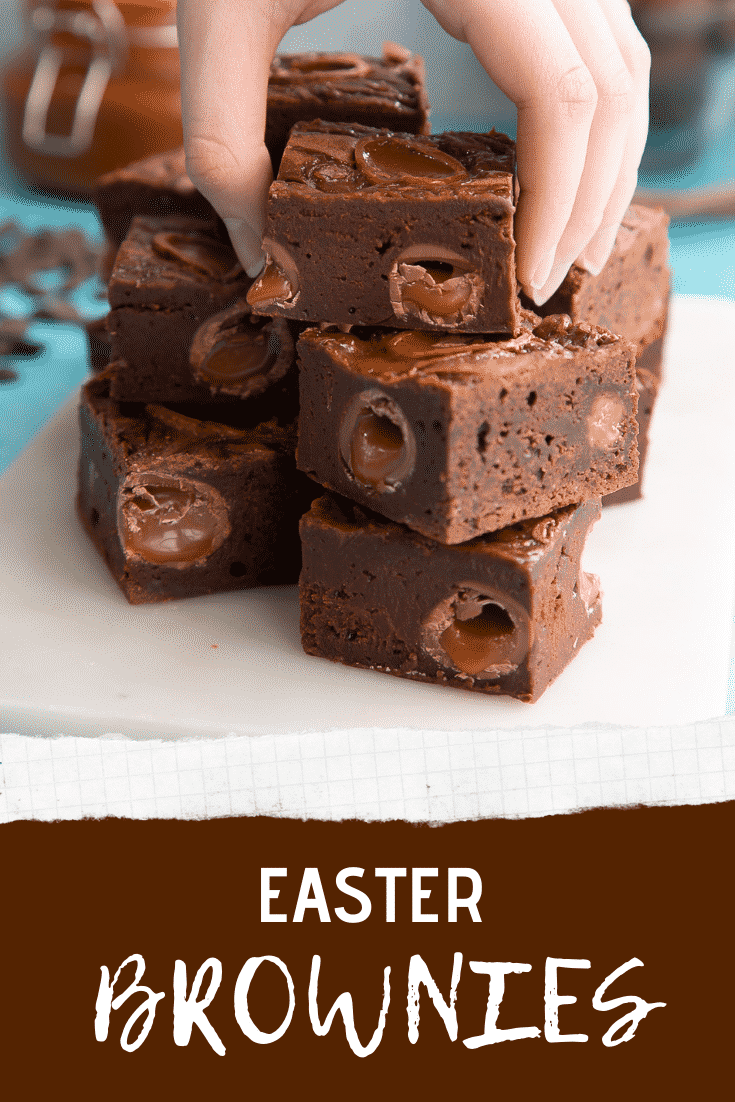
Is this Easter brownie recipe keto-friendly?
The high sugar content and flour in this Easter brownie recipe means that it isn't a keto-friendly dessert. Sorry!
Is this Easter brownie recipe healthy?
This Easter brownie recipe is best enjoyed as an Easter treat, as it's pretty high in sugar and fat. However, there's nothing wrong with a treat as long as you have an otherwise healthy and varied diet.
Is this Easter brownie recipe safe to eat while pregnant?
There is nothing in this Easter brownie recipe that would be considered unsafe for pregnant people. So as long as the ingredients are fresh and the recipe is prepared safely, it should be a delicious treat!
When you cook for someone in a high risk group (pregnant, older/very young, health conditions) you should take extra care. Ensure that all of your ingredients are in good condition and that this meal is prepared safely and hygienically.
A Mummy Too does not offer medical advice. Please seek help from a medical professional if you need further information or have any concerns.
What goes well with this Easter brownie recipe?
These brownies are delicious on their own, but sometimes my family likes eating brownies served in a bowl with some cream poured on top. Or, you could warm a brownie for a few seconds in the microwave and serve it with some soft vanilla ice cream.
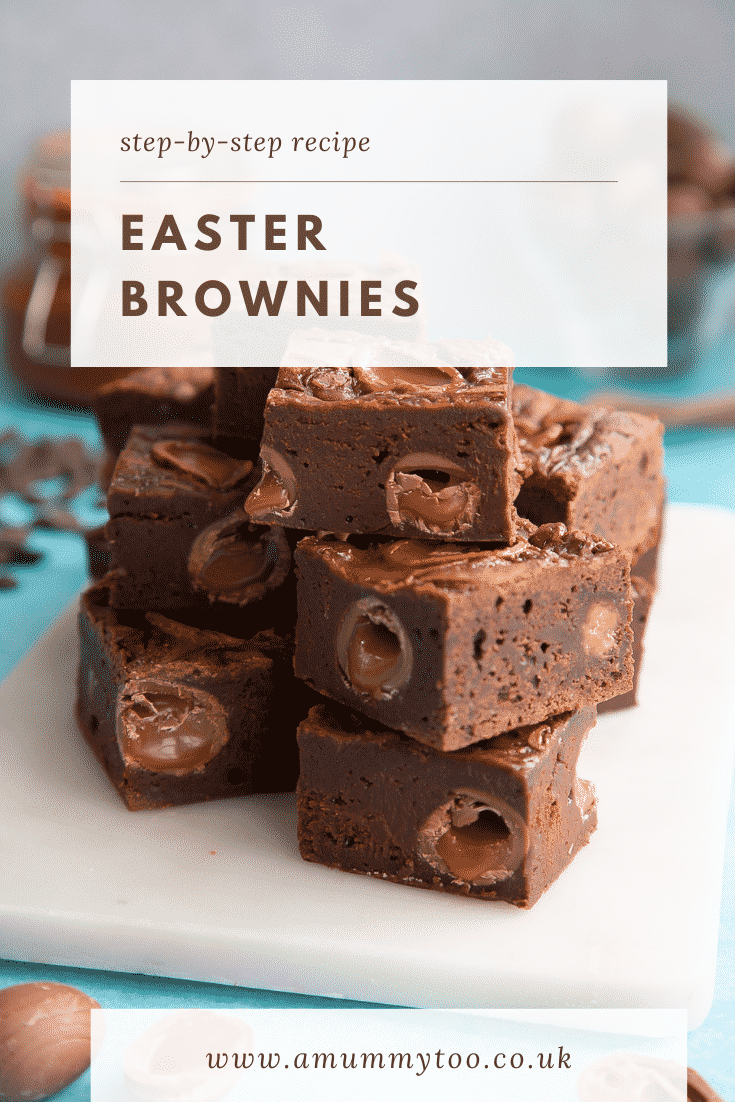
Can I add extra chocolate to this recipe?
This recipe is mainly chocolate, so if you can find a way to fit more in - you gotta do what you gotta! It could be nice to drizzle melted white chocolate over the top of your brownies for a colour contrast.
How should I store my Easter brownies?
You should store your Easter brownies inside an airtight container. You should keep the container somewhere cool and dark to keep your brownies fresh for longer.
If you're making your brownies ahead of time, you can store the sheet of brownies without slicing it. This will reduce the amount of air from getting to the centre and stops the brownies from drying out so quickly.
How long will my Easter brownies keep?
Your Easter brownies should keep for up to a week in a sealed container. Or, if you want to keep them for longer, you can freeze them for up to 3 months.
Can I leave my Easter brownies out on the counter?
You shouldn't leave your Easter brownies out on the counter as they can quickly turn stale if left out for too long. The best place for your brownies is a sealed container or lunchbox in a cupboard.
Can I make my Easter brownies ahead?
It's always best to serve your recipes as fresh as possible. While homemade bakes are more delicious, unfortunately, they're also more likely to go stale faster than shop-bought food.
However, this Easter brownie recipe should keep for a few days as it's so moist. So if you want to make them a couple of days ahead you can keep them in the cupboard, or freeze them for up to 3 months until you need them.
Can I keep Easter brownies in the refrigerator?
Your Easter brownies will be fine stored in a container in the cupboard, but feel free to keep them in the fridge. Though it might change the texture a little.
The lower temperature will cause the moisture in the brownie to redistribute, leaving you with fudgier brownies - not a bad thing!
Can I freeze Easter brownies?
Yes, this Easter brownie recipe freezes really well! Once its cooled, you can freeze your brownies in a full slab, or in individual slices.
You can freeze your brownies in a couple of ways to keep them at their best:
- First, you can wrap them in cling film (saran wrap) and if you like, store them inside a container.
- Or, you can store the slices inside an airtight container, layered between sheets of baking paper so they don't stick together.
Both of these methods should protect your brownies from developing freezer burn and keep them fresh for longer. Freezer burn is the frosty layer on frozen food. It occurs when water is drawn into the air around the food, so reducing the amount of air around your food will help.
Don’t forget to label your brownies with the date you made them and froze them, so you know how long they’ve been stored.
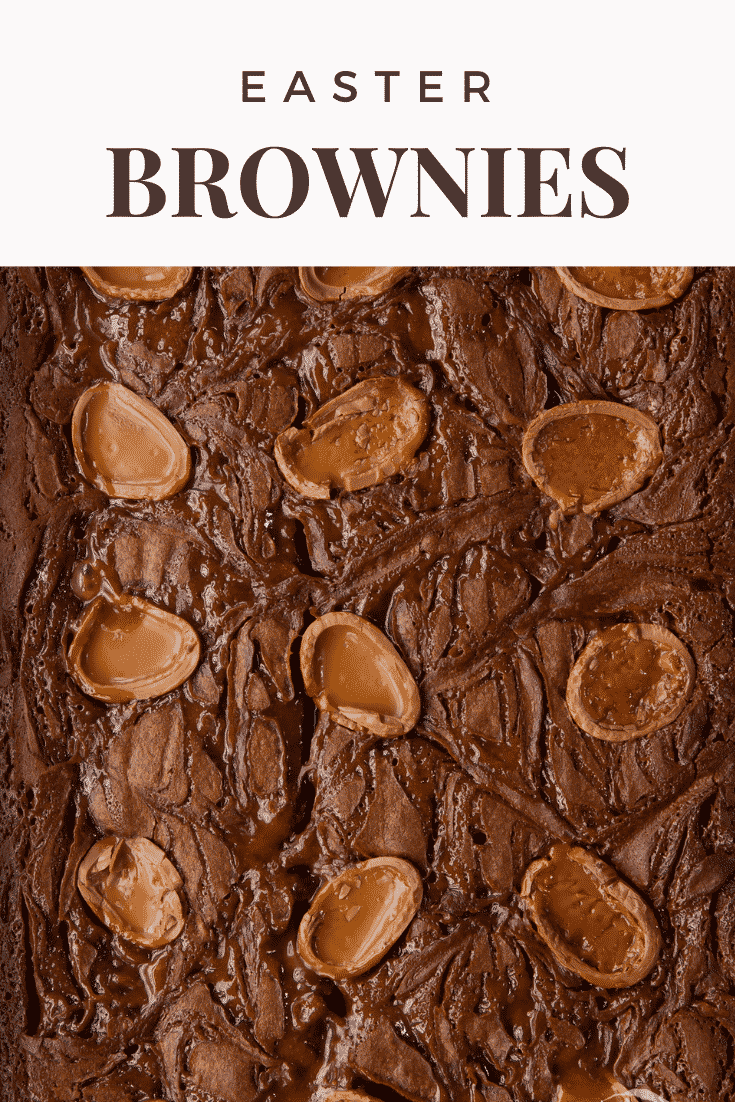
What is the best way to defrost Easter brownies?
The best way to defrost your brownies is the transfer them from the freezer to the fridge.
If you're defrosting the whole batch or an uncut slab, leave them for around 8 hours or overnight.
If you're defrosting an individual brownie it should be defrosted within a couple of hours.
Can I make these Easter brownies in a different quantity?
If you want to make more or less of this recipe, go ahead! You can use a recipe conversion calculator to change the yield of your Easter brownie recipe.
If you change the size of your recipe, you should make sure you use the correct sized baking tin. For example, if you make fewer brownies you'll need to use a smaller baking tin. Otherwise, the brownie batter will spread too thin and turn out cake-like or burned.
I haven't tried a smaller or bigger version of this recipe, so I can't guarantee how it would turn out.
You may need to adjust the cooking time and temperature if you drastically reduce or increase the size of your brownies. You could try lowering/raising the temp by 10 degrees and lowering/raising the time by 10 minutes. Though you'll need to keep a close eye on your adjusted batter to make sure it cooks and doesn't burn.
Can I make this recipe in a different tin/tray?
As I said above, the size of the tin can affect the way your Easter brownie recipe turns out.
So, if you use a different shaped tin, make sure it isn't too wide or too narrow. If it's too narrow, the brownie will be too deep and struggle to cook through. If it's too wide the brownie will spread too thin and burn.
Use the picture of the brownie batter in the tin to judge whether your alternative container is appropriate. Whichever tin/tray you use, your brownie shouldn't be much thicker or thinner than 2 inches.
Can I make this Easter brownie recipe in a stand mixer like a KitchenAid or Kenwood Mixer?
You only need to mix your brownie batter ingredients enough to combine them, so a stand mixer isn't essential. A manual whisk is the best option for this recipe as you're less likley to overmix the batter or break the eggs up too much.
That said, if you prefer to use a stand mixer or you need some support, feel free to use one!
If you're using a KitchenAid/Kenwood stand mix, it would be best to use the balloon whisk or paddle attachment. Mix your batter slowly and in 5-second bursts so that you don't overwork the batter.
Remember to scrape down the sides every time you add an ingredient. This ensures every element is fully incorporated, and you don't lose any.
Can I make this Easter brownie recipe with a food processor?
A food processor would be too powerful to make brownies. You would most likely end up with tough brownies, with no noticeable chocolate egg pieces.
So if you need help mixing your batter, a stand mixer would be the best option.
How can I make sure my Easter brownie recipe turns out perfectly?
Here are some tips for best practice so you can get the best results from this Easter brownie recipe:
- Preheat/temperature: Preheating your oven to the right temperature is crucial for excellent bakes. If your oven is too cold or hot, the brownies will undercook or burn. Brownies can suddenly turn from cooked to dry, so making sure the oven isn't too hot is critical. Many household ovens have incorrect temperature dials, or inconsistent areas and hot spots. So if you think your oven temperature is incorrect, an oven thermometer can help. You can find oven thermometers in kitchenware stores or on Amazon. If your oven has a noticeable hotspot; you can work around it. For example, I put my baking trays to the left, as my oven is hotter on the right!
- Prepare: Before I begin cooking, it's best to weigh and measure all of my ingredients. I find it helps to put them out into individual bowls/cups and lay them out in front of me. This will ensure you don't mismeasure or forget to add any of your ingredients.
- Chocolate: When you melt your chocolate, you can do it two ways. If you melt your chocolate in the microwave, make sure you only heat it in 10-15 second blasts. This will reduce the chance of it burning. If you melt your chocolate in a bowl over a pan of simmering water, make sure the bowl doesn't touch the water. You can also use a chocolate thermometer if you want to be extra cautious.
- Mixing: When you mix your ingredients together, you only need to mix them enough to bring them together. Don't overmix the ingredients. Overmixing can result in tough brownies. Equally, overmixing would mash up your caramel eggs!
- Timing: Once your brownies are in the oven, you should set a timer on your phone and the oven. Using two timers makes sure you won't miss the alarm if you get distracted elsewhere. You could also set the timer 10 mins early, so you can check the brownies.
- Checking: It's best not to open the door more than you need to and not for at least 20 minutes. Brownies have no raising agents, so they won't deflate like cakes, but it's still better to avoid constant interruptions to the baking process.
Red Lion approved eggs in the UK are safe to eat raw or semi-cooked. So if you prefer gooey brownies, you can safely undercook your brownies by 10 minutes! Or if you prefer a more cake-like brownie, let them cook longer.
When your brownies are cooked, they should be set across the top. They will be browned and maybe a little crispy around the edges, but still a little soft in the middle. They shouldn't be liquid or completely hard in the centre.
Why did my Easter brownies turn out dry/crumbly?
This Easter brownie recipe should give you some moist or even fudgy brownies. So if they're dry, you may have added too many dry ingredients, or too little chocolate, butter or eggs. Equally, you may have cooked the brownies for too long or at high heat.
Your brownies should be baked at 180C (160C fan), so it's unlikely they overcooked if they were at the right temperature. So you may need to check your oven is running at the right temperature with an oven thermometer.
Why did my Easter brownies turn out wet/soft/dense?
If your Easter brownies are runny and you’re sure that you added the correct quantities of ingredients, then your oven probably wasn’t hot enough or they weren't in for long enough.
Make sure you set your oven to preheat before you start making the brownies. It’s vital that the oven is at the right temperature when the brownies go in or they simply won’t cook properly.
Secondly, make sure to set a timer to take the guesswork out of knowing when your brownies are done. When they seem done, push a skewer pushed into the centre of the tin. If it comes out with sticky crumbs attached, but no liquid batter, your brownies are done.
How can I add/change the flavours in this Easter brownie recipe?
If you want to add something to this Easter brownie recipe, I'd recommend using something which won't offset the balance of ingredients too much. For example, using some dried spices like nutmeg, or a few drops of food essence. Or you could add some chopped nuts or dried fruit.
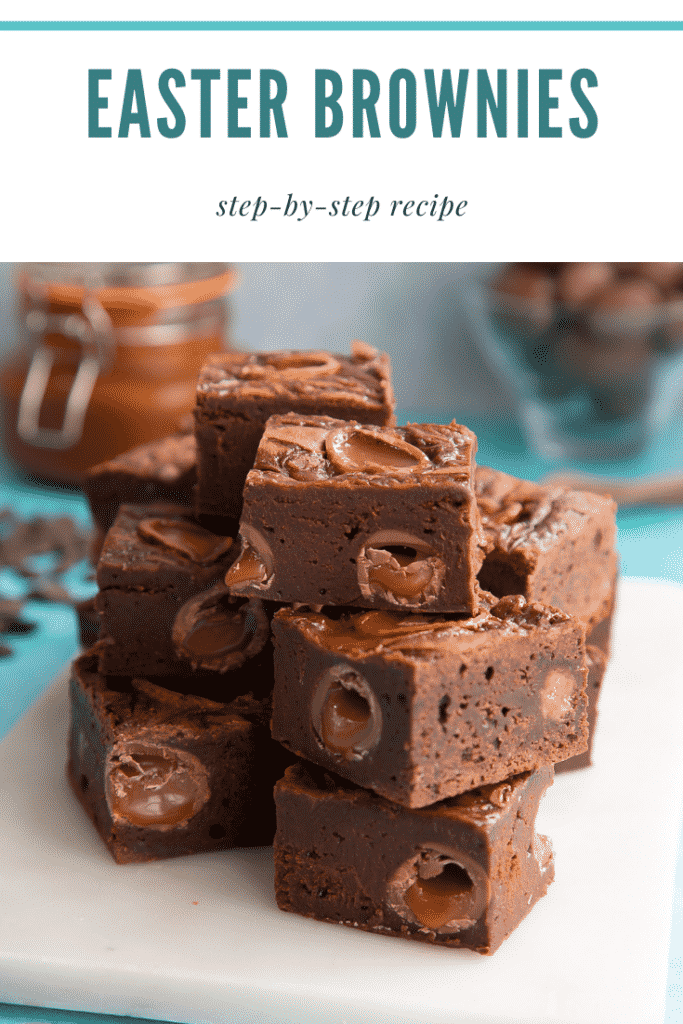
Who invented brownies?
References to brownies first appeared in the 1800s, but confusingly, they were actually blondies! Once chocolate became widely available in the 1900s, the name switched to the chocolate brownies we know today.
The Palmer House Hotel in Chicago claims a former pastry chef invented brownies for the then owner's wife to serve at parties. The Palmer House Brownie is definitely one of the older known brownies, but no one can be sure if that's where they were invented. The Palmer House brownie recipe is slightly different, as it has an apricot glaze.
Print this Easter brownie recipe
Easter Brownie Recipe
Ingredients
For the batter
- 400 g (14 oz) dark chocolate (bittersweet) roughly chopped
- 280 g (2 sticks + 1 tbsp) slightly salted butter cubed
- 450 g (2½ cups) white caster sugar (superfine sugar) superfine
- 6 medium free range eggs room temp, beaten
- 1 tbsp vanilla extract
- 170 g (1 cup + 3 tbsp) plain white flour (all purpose flour)
- 240 g (8.5 oz) mini caramel eggs
To top
- 50 g (2½ tbsp) salted caramel sauce
- 80 g (3 oz) mini caramel eggs halved
Equipment
- Rectangle 32x23cm (12"x9") nonstick cake tin
Instructions
- Preheat the oven to 180C (160C fan / 350F).
- Put the butter and chopped dark chocolate in a large, heatproof bowl. Use 30 second bursts in the microwave to melt the chocolate and butter together. Alternatively, you use a bain marie method, placing the bowl over a pan with a little boiling water and allowing the steam to heat the bowl and you stir gently.
- Add the sugar. Whisk lightly together It's ok if it's grainy at this stage.
- Whisk in the beaten eggs and vanilla.
- Sieve the flour into the bowl and fold through with a silicone spatula or metal spoon.
- Grease and line a 20cm x 28cm (8 inch x 11 inch) non-stick shallow rectangular cake tin. Fill with half the brownie batter and level off.
- Put the 24 whole mini caramel eggs on top of the batter, spacing evenly all over.
- Spoon the remaining batter on top and gently level off, ensuring all the eggs are covered.
- Drizzle the caramel all over the top of the brownie batter, then swirl gently with the handle end of a spoon.
- Top with the halved mini caramel eggs in a 3 x 5 pattern so that one half will top each piece when sliced.
- Bake for 30-35 minutes. You can test if it's baked by pushing a skewer into the centre. If under-baked, you'll see totally wet batter on the skewer. If just right, you'll see sticky crumbs. If over-baked, the skewer may come out completely clean.
- You might need to do a few checks to make sure you're not prodding a melted egg. Be careful not to over-bake as this can also cause the caramel to overcook and harden.
- Leave the brownie in the tin to cool. If you've elected to keep them quite softly baked and fudgy, placing the cold brownies in the fridge over night will really help them firm up.
- Once the brownie is chilled, transfer to a board and cut into 15 equally sized squares in a 3x5 pattern.
Video
Nutrition
If you enjoyed this recipe why not try my delicious creme egg scotch eggs, my amazing hot cross bun bread and butter pudding or even these vegan Easter biscuits.
Pin this Easter brownie recipe
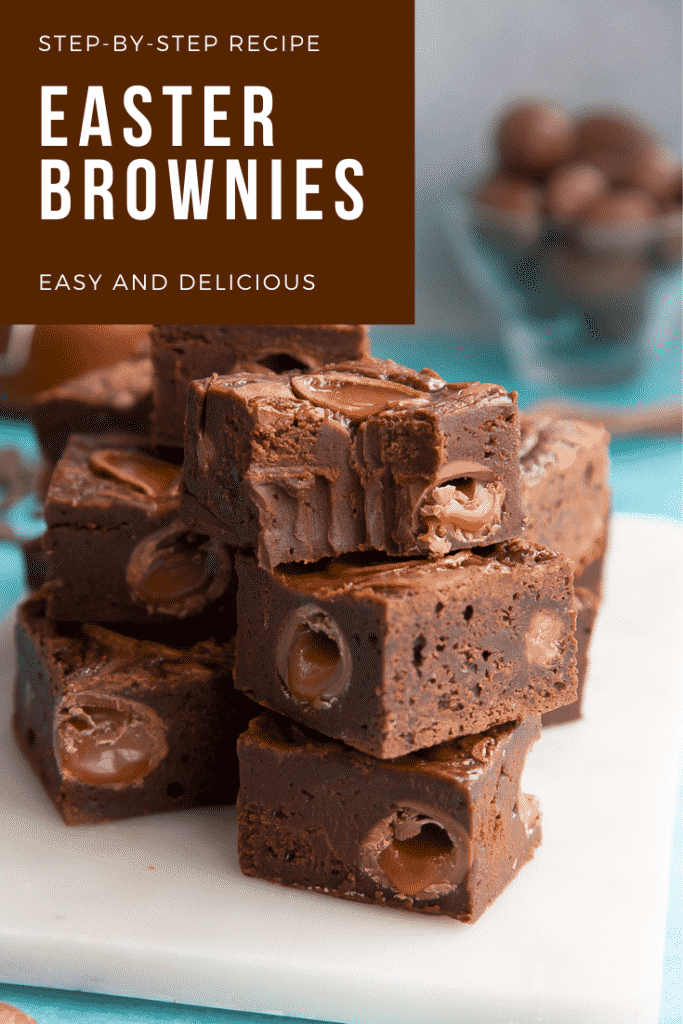
More Easter recipes to try
Have you got my book?
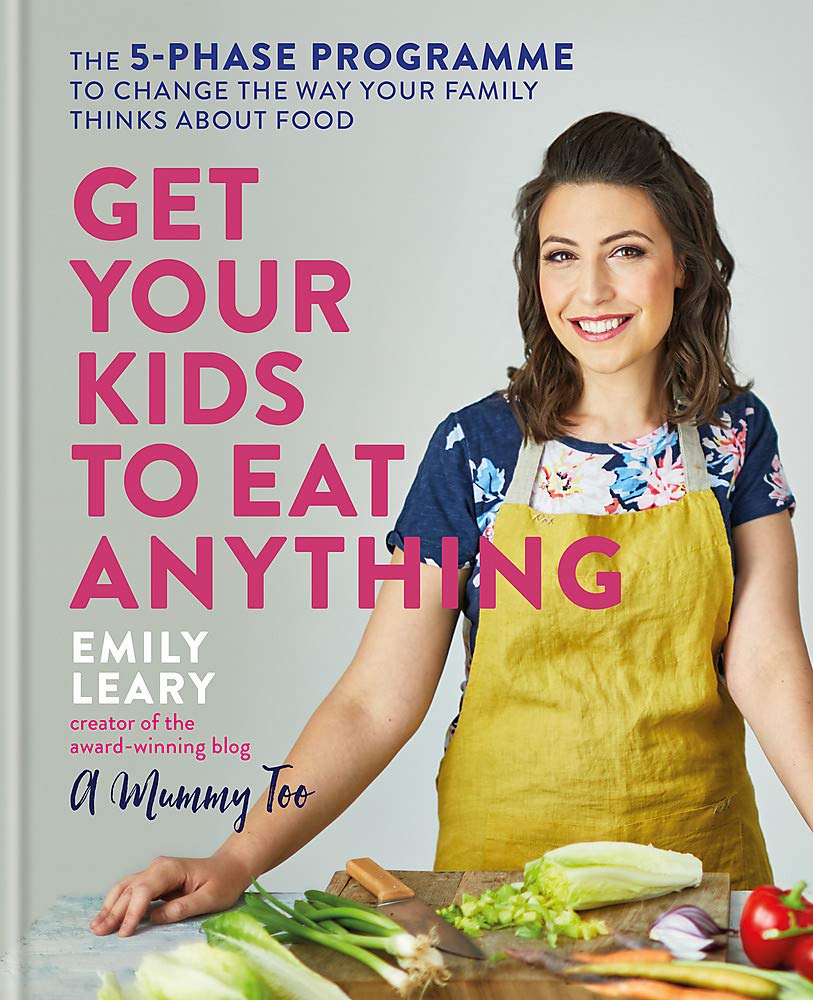
'This is a great kids cookery book. Emily is a star' - Simon Rimmer
'The book I'd like to force into any mother's kitchen' - Prue Leith
"A fab book with a plan." - Jane Devonshire, 2016 Masterchef UK winner
'Emily has managed to combine her mummy knowledge and passion for food to make a truly helpful and brilliant cookbook' - Priya Tew, RD, BSc (Hons), Msc
Get Your Kids to Eat Anything is an achievable 'how to' for parents in the battle to overcome picky eating and 'make new the norm'. Emily Leary's unique 5-phase programme looks at the issue of 'fussy eating' in a holistic way that links imagination with food, and which situates parents alongside - not in opposition to - their children.
.

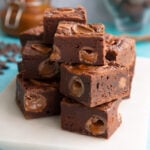
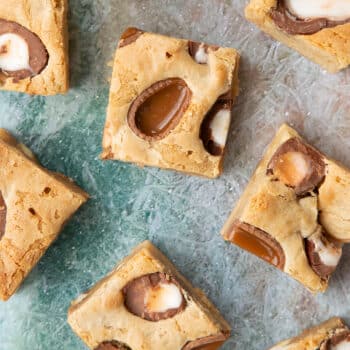
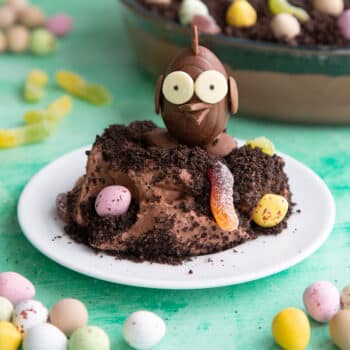
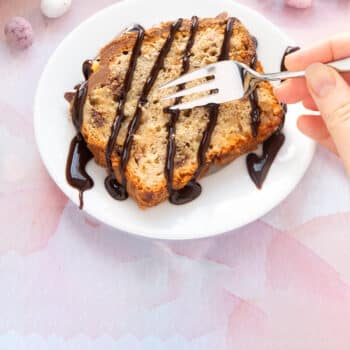
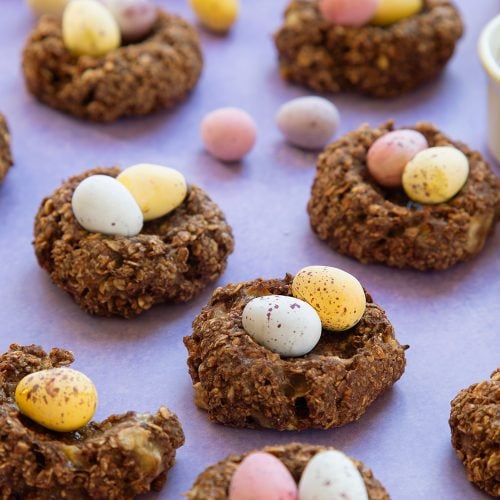
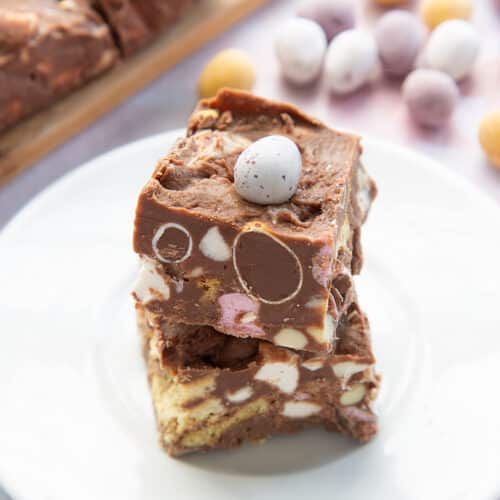
Leave a Reply